Rewilding Velebit: Another Eurasian Lynx Released - Meet Ljubo
June the 17th, 2022 - The Rewilding Velebit team have released another gorgeous Eurasian lynx on Croatia's famous, imposing mountain range. Ljubo has become the sixth Eurasian lynx to be released into the wild in Croatia.
As Morski writes, as stated, Ljubo the lynx was released by the Rewilding Velebit team as part of the wider LIFE Lynx project, which aims to save the population of this species because since the 1990s, hunters have noticed fewer and fewer lynxes and declining populations, which unfortunately is still the case to this day.
The most significant cause of Croatian lynx extinction, as well as their dying out in neighbouring countries, is inbreeding. For almost 45 years now, the offspring of a mere six animals have been mating exclusively with each other, which causes tremendous issues.
''We estimate that today there are 30-40 lynxes living wild in Croatia, in neighbouring Slovenia, there are only 10-20, and in Italy, the situation is even more critical. Scientific research indicates that the lynx will become extinct again if new animals don't come here and settle and as such increase the genetic diversity of the population. Therefore, representatives of the forestry, hunting and scientific institutions jointly prepared a project proposal for the rescue of a lynx for whom they applied to the LIFE tender for co-financing from the European Commission. The project was positively evaluated and has been being implemented from July 2017, it will continue to be implemented until March 2024,'' wrote the team from the LIFE Lynx project.
The project involves eleven institutions from five countries - Croatia, Slovenia, Italy, Slovakia and Romania, and here in Croatia it will be implemented by the Faculty of Veterinary Medicine, the University of Zagreb, the Polytechnic of Karlovac and the BIOM Association. In addition to the European Commission, the Croatian part of the project is being co-financed by the Fund for Environmental Protection and Energy Efficiency, and significant funds are being provided by the Slovenian Ministry of Environment and Spatial Planning.
The long-term goal of the project is to prevent the extinction of the lynx population in the Dinarides and in the Southeast Alps as a whole, which will be achieved primarily by settling four animals from Slovakia and Romania here in Croatia and ten others in neighbouring Slovenia. The success of their settlement will be monitored by scientific research, which will include the monitoring of these animals and their offspring using automatic cameras and GPS collars, and many genetic and ecological analyses. The countries involved in the project will coordinate and improve the management of this endangered species and strategic documents will be prepared to ensure long-term cooperation in this area.
''The beautiful lynx is an enormous treasure of Croatian nature and it's our responsibility to preserve it for future generations. A prerequisite for achieving this goal is the cooperation of all relevant institutions and public support,'' they added from LIFE Lynx.
A male lynx named Lubomir, or Ljubo, was caught in Slovakia and has spent the past two months in quarantine to make sure he's healthy. This male lynx was released recently at the Ramino Korito hunting ground, managed by Rewilding Velebit, and its arrival was welcomed by members of the Gospic Handball Club and representatives of the local community. Ljubo will join the other Carpathian lynxes Emil and Alojzije who already live on Velebit, and about 30 other local Velebit lynxes.
In the last three years, the project has released a total of 15 animals, five in the Croatian part of the Dinarides, five in the Slovenian part of the Dinarides and five in the Slovenian part of the Alps. Ljubo the lynx was released from his transport box by Marija Krnjajic, the director of the Rewilding Velebit Foundation, Mile Ugarkovic, the secretary of the Hunting Association of Lika-Senj County, and Ira Toplicanec, an employee of the LIFE Lynx project.
For more, make sure to check out our dedicated lifestyle section.
Was There Once a Submerged River on Velebit and an Estuary in Pag Bay?
March the 21st, 2022 - Was there once a submerged river with its source on Velebit, and an estuary on the much loved Pag Bay? Research is providing insights into an area that was once heavily wondered about by speleologists, but difficult to totally impossible to access.
As Morski/Josip Portada writes, just north of the town of Pag, between Kotica and Veli bok, above a small sandy beach, there is a barely visible opening that leads into a cave where a person of medium height can fully stand up. The cave, which isn't far at all from Kotica was initially explored by speleologists back in the 1970s, when it was determined that, just 32 metres from the cave's opening, the rest was impassable due to collapsed stones and earth.
Research undertaken since has shown that the cave was probably part of the underground flow of a river, which, in an as yet undetermined geological period, appeared on the island of Pag from the mighty Velebit. The submerged river, which existed or could have existed in the central part of the island of Pag, was talked about as early as the 1960s.
In a joint scientific paper, Jasmina Lukac Reberski, Josip Terzic and Stipe Dolic stated at the fourth Croatian Geological Congress back in 2010: “The morphology of the island of Pag plays a significant role in the accumulation and flow of groundwater. Fields in the Eocene syncline are very favourable for water accumulation. The core of the anticline most likely acts as an underground watershed, and part of the water in the limestone drains out towards the fields and partly towards the sea. Therefore, there are a large number of small coastal springs and springs.''
This question of the submerged river and estuary on Pag was also explored by prof. Dr. Antun Magdalenic, who, way back in 1963, in his work on this research, stated that on the island of Pag there is an underground mixing of infiltrated water with sea water which "extends like a wedge into the interior under fresh and brackish water due to differences in density."
Assumptions about the existence of these rivers were confirmed by geological research back in 2002 and 2003, and then the allegation of the underground mixing of that river water with the sea was confirmed. During the 1970s, INA organised for oil exploration to take place on the island of Pag, and numerous wells were drilled for that purpose. Most of these wells were drilled near Crnika beach, at the foot of Ledenik and the Sveti Juraj peak. Geologist Jeronim Bulic, who later became the curator of the Croatian Museum of Natural History in Zagreb, took part in these very activities. No oil was found, but something else rather interesting was found. Bulic said that, during the Austro-Hungarian Empire, lignite was mined near Crnika, and Austrian engineers then found the remains of fossils and recorded everything very neatly.
''That was the starting point, their recording of fossils, based on that we went on to research it further,'' said Bulic.
Geologist Jeronim Bulic said that 18 million-year-old Miocene deposits were found on Crnika beach, with numerous fossils, a crocodile tooth and volcanic dust deposits. On the opposite side of Pag Bay, in the area of Ledenik, geological structures were observed which indicated the possible existence of an underground water flow. The cave near Kotica was especially interesting, however, the research wasn't continued.
It was assumed that Vela lokva and Mokra stena on Ledenik were probably connected with the course of the submerged river. Another indication of the existence of groundwater was found on Ledenik, among others on the rock that dominates the area around Vela lokva. On this rock there are obvious traces of the action of water coming "from a possible inner pool, through the structure of permeation with its support." However, thorough geological research should be conducted to prove the assumption that in the past, north of the town of Pag, there was a submerged river whose source was on Velebit and its mouth in Pag Bay.
For more, make sure to check out our dedicated lifestyle section.
PHOTOS: Snowy Riversides and Magical Mountains of Croatia in January 2022
January 28, 2022 – The snowy riversides and magical mountains of Croatia in January 2022 show a spectacular and all-natural winter wonderland.
Snow finally stuck to the streets of central Zagreb for a couple of days this week. Early morning temperatures dropped to the lowest yet of this winter. Despite the chill, clear skies and sunshine days were enough to see the snow soon melt away.
But, far from the city, the snowy riversides and magical mountains of Croatia in January 2022 have kept their white blanket for longer. These all-natural landscapes look epic after the snowfall. For winter walkers and climbers – or even just lovers of photography – these images are way more spectacular than the bright lights and theatre of the Advent season.
Let's take a closer look at the winter wonderland of snowy riversides and magical mountains of Croatia in January 2022.
Gorski Kotar
Delnice, Lokve, Fužine, Stara Sušica, Ravna Gora
 © Turistička zajednica Gorskog kotara
© Turistička zajednica Gorskog kotara
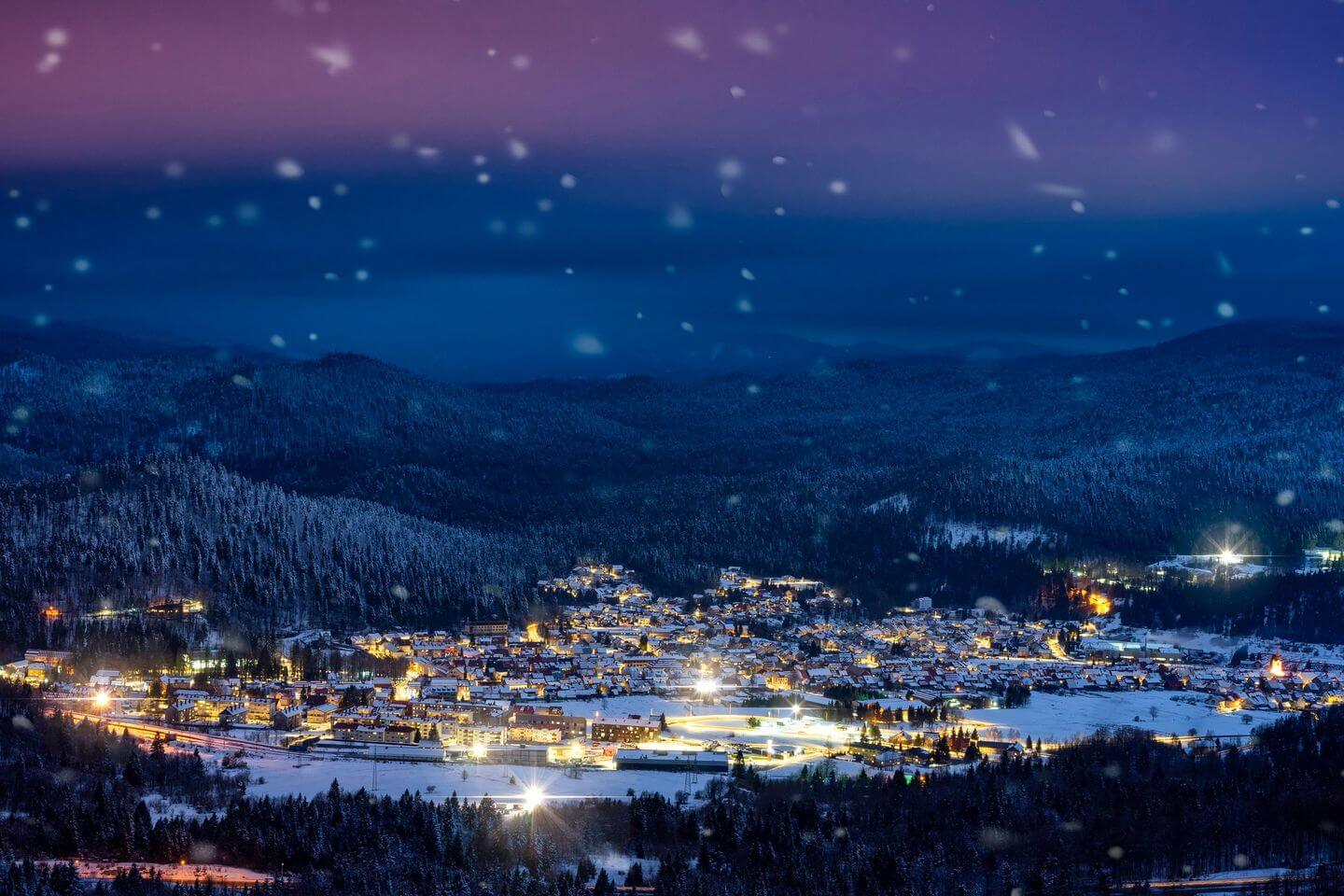 © Turistička zajednica Gorskog kotara
© Turistička zajednica Gorskog kotara
 From above, Dvorac Stara Sušica © Vladimir Franolić
From above, Dvorac Stara Sušica © Vladimir Franolić
 © Branko Lautar & Višnja Bolf
© Branko Lautar & Višnja Bolf
 Jezero Bajer near Fužine © Marino Kirinčić
Jezero Bajer near Fužine © Marino Kirinčić
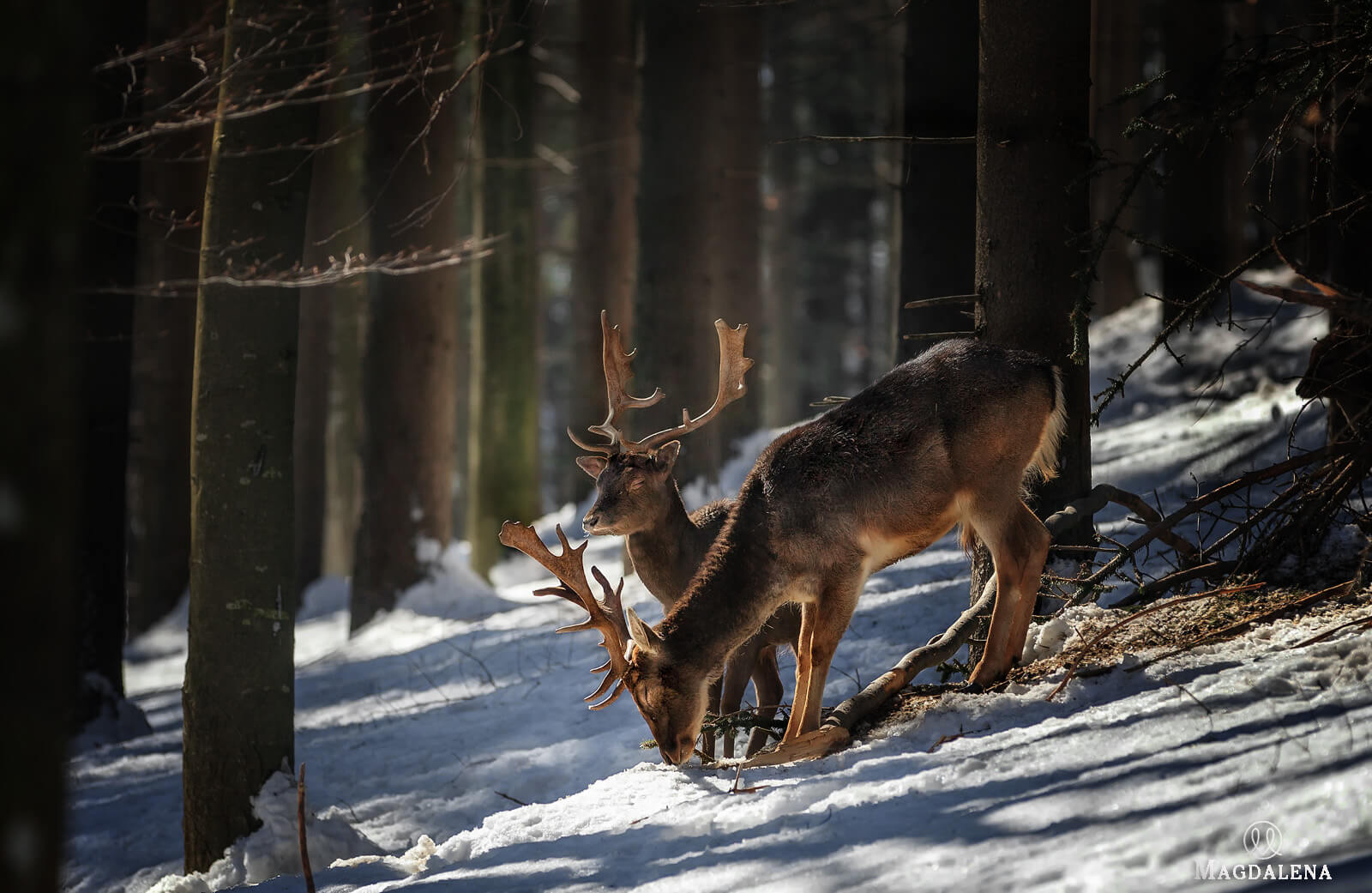 © Branko Lautar & Višnja Bolf
© Branko Lautar & Višnja Bolf
 © Turistička zajednica Gorskog kotara
© Turistička zajednica Gorskog kotara
 Another view of Dvorac Stara Sušica © Branko Lautar & Višnja Bolf
Another view of Dvorac Stara Sušica © Branko Lautar & Višnja Bolf
Risnjak National Park and Snježnik Hrvatski
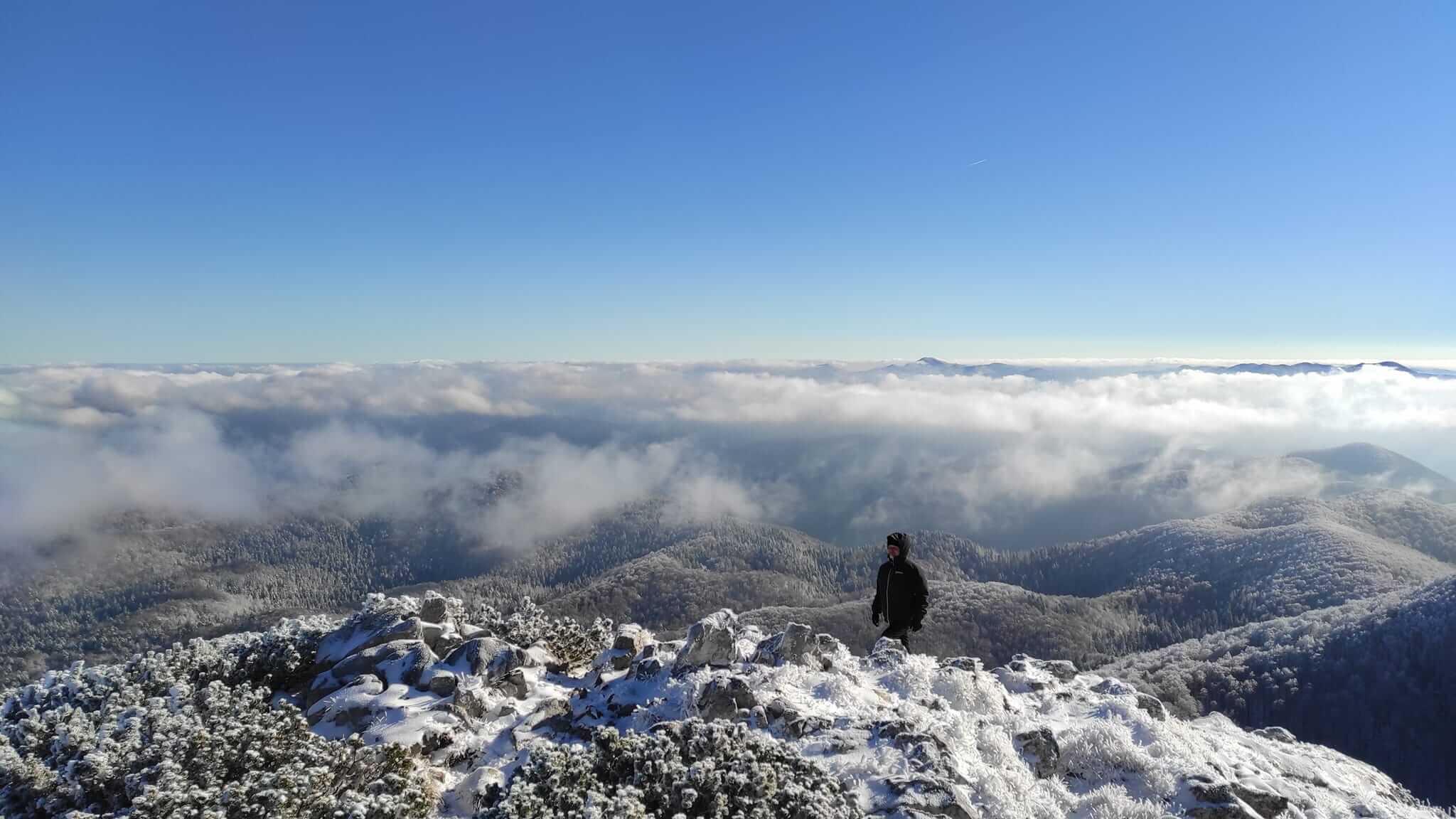 © Risnjak National Park
© Risnjak National Park
 Snježnik hrvatski © Ivan Ćuća-Žentil
Snježnik hrvatski © Ivan Ćuća-Žentil
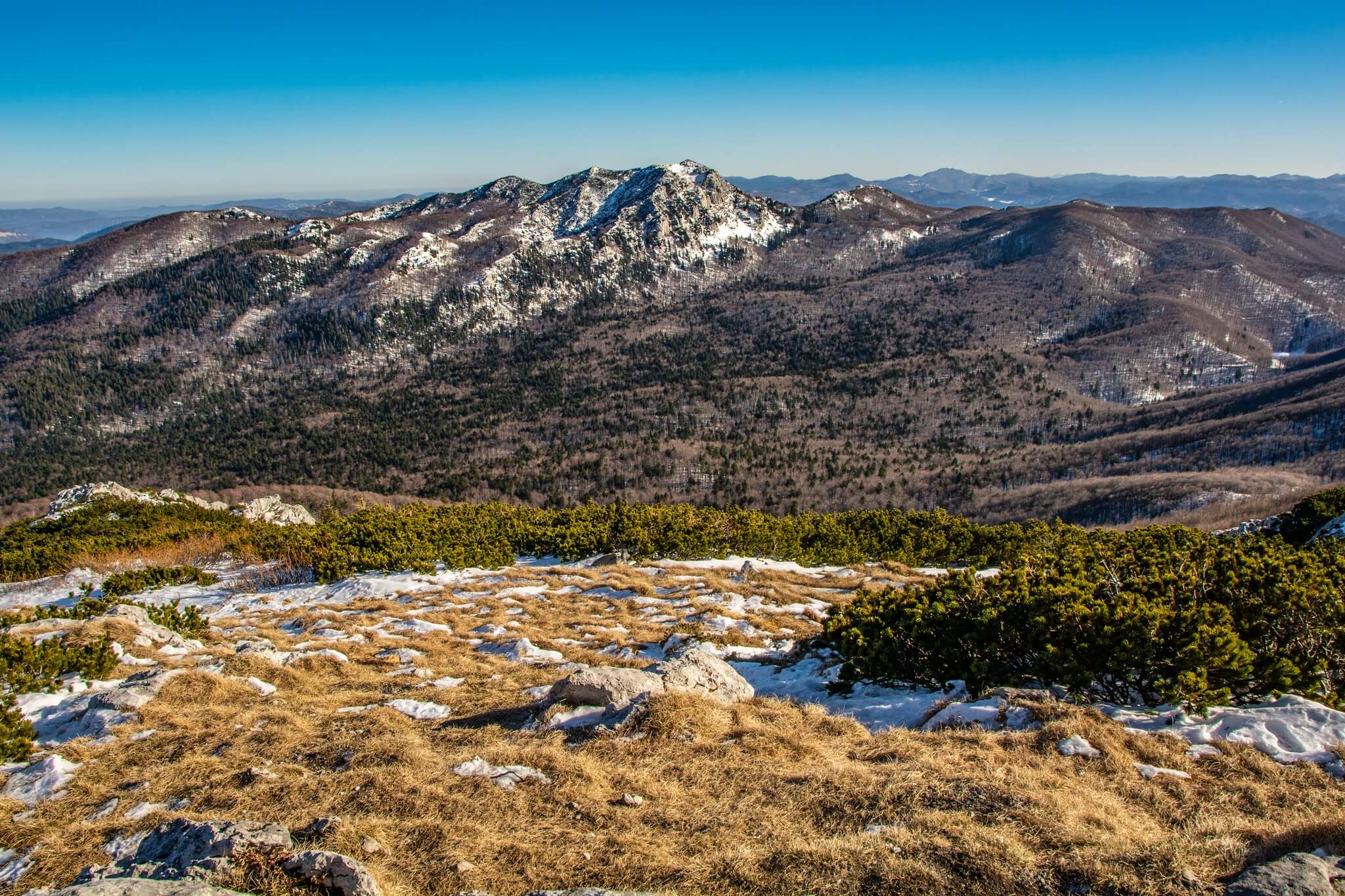 Snježnik hrvatski © Ivan Ćuća-Žentil
Snježnik hrvatski © Ivan Ćuća-Žentil
 Snježnik hrvatski © Ivan Ćuća-Žentil
Snježnik hrvatski © Ivan Ćuća-Žentil
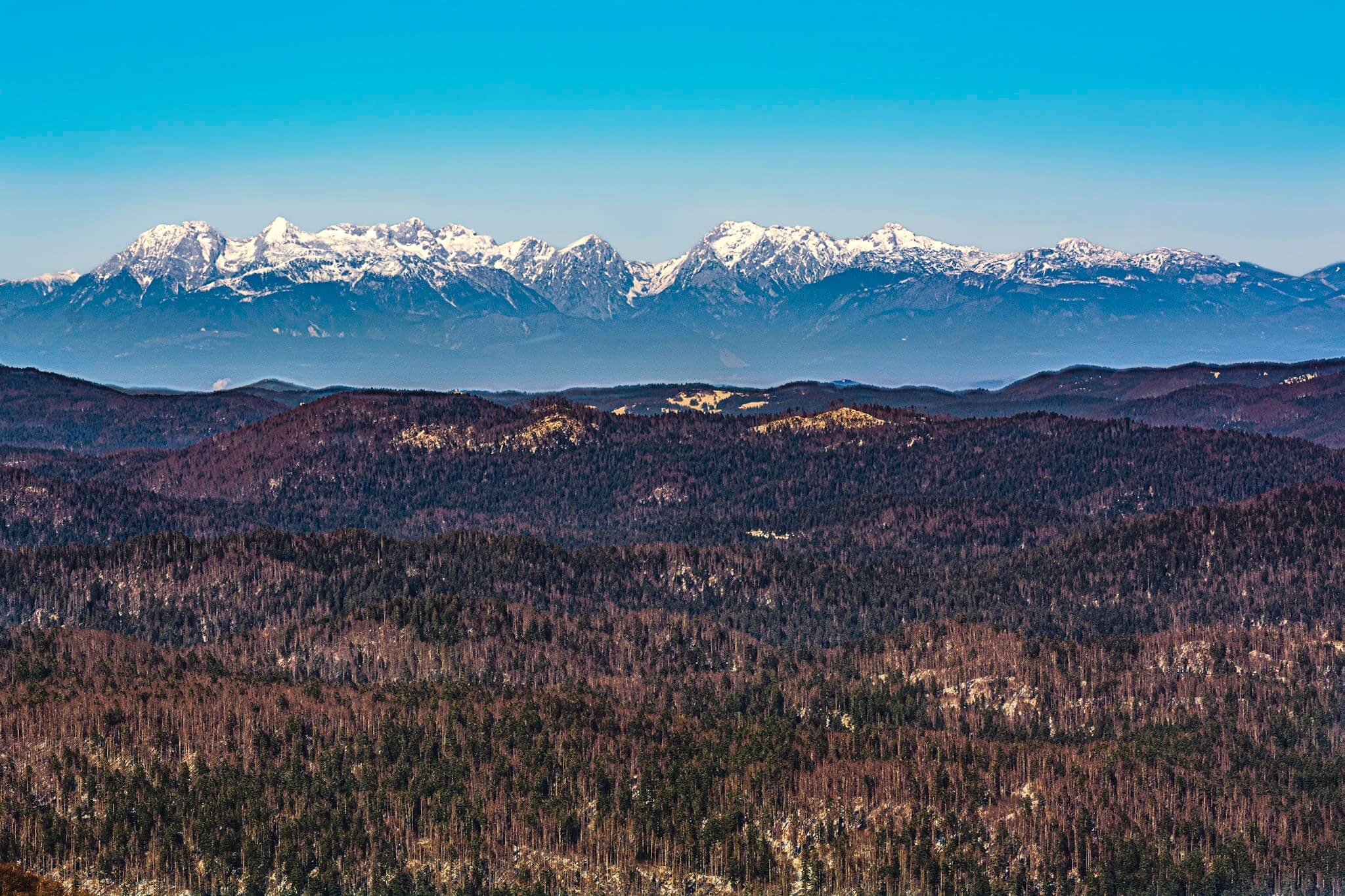 Snježnik hrvatski © Ivan Ćuća-Žentil
Snježnik hrvatski © Ivan Ćuća-Žentil
 Snježnik hrvatski © Ivan Ćuća-Žentil
Snježnik hrvatski © Ivan Ćuća-Žentil
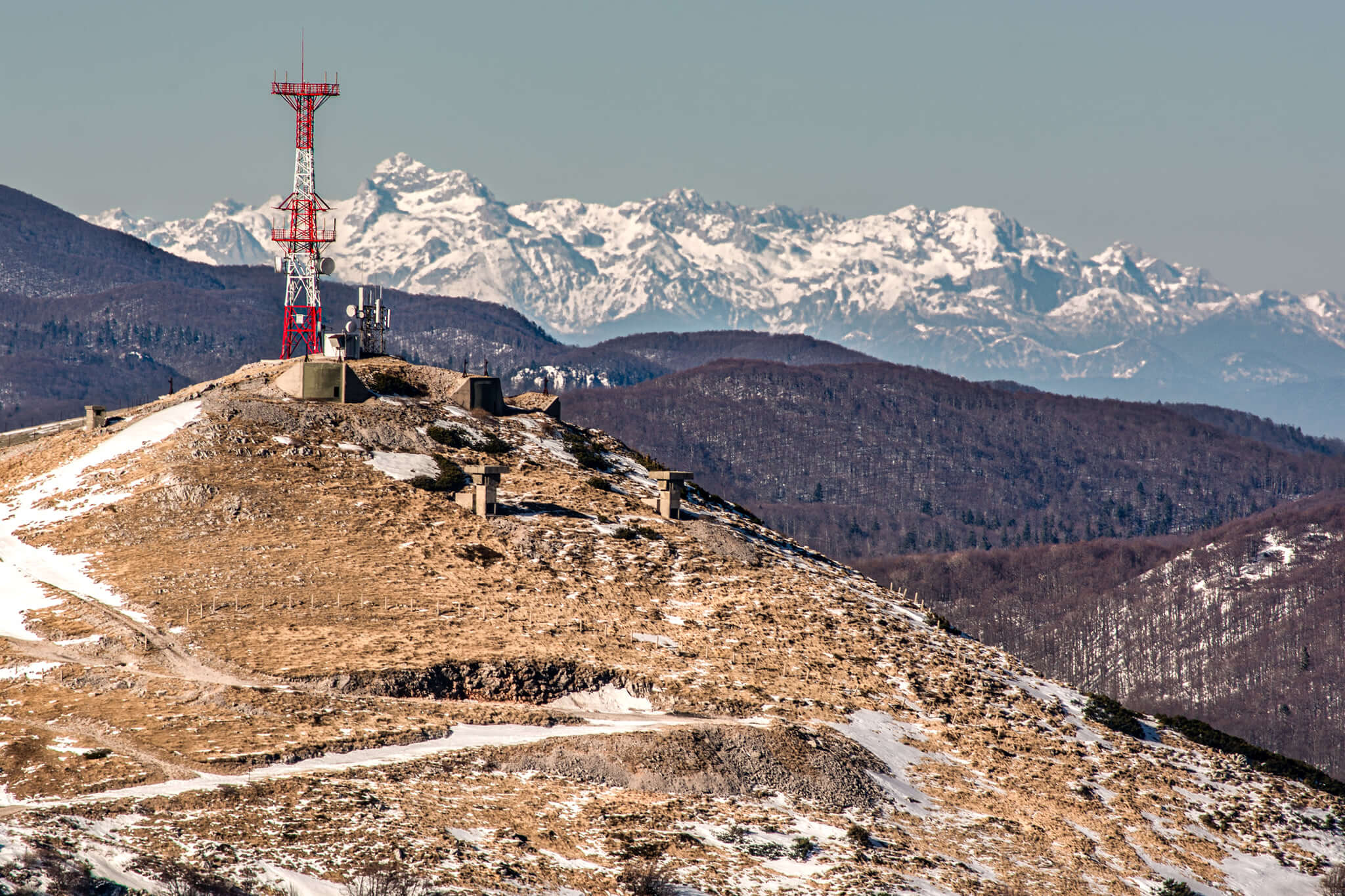 Snježnik hrvatski © Ivan Ćuća-Žentil
Snježnik hrvatski © Ivan Ćuća-Žentil
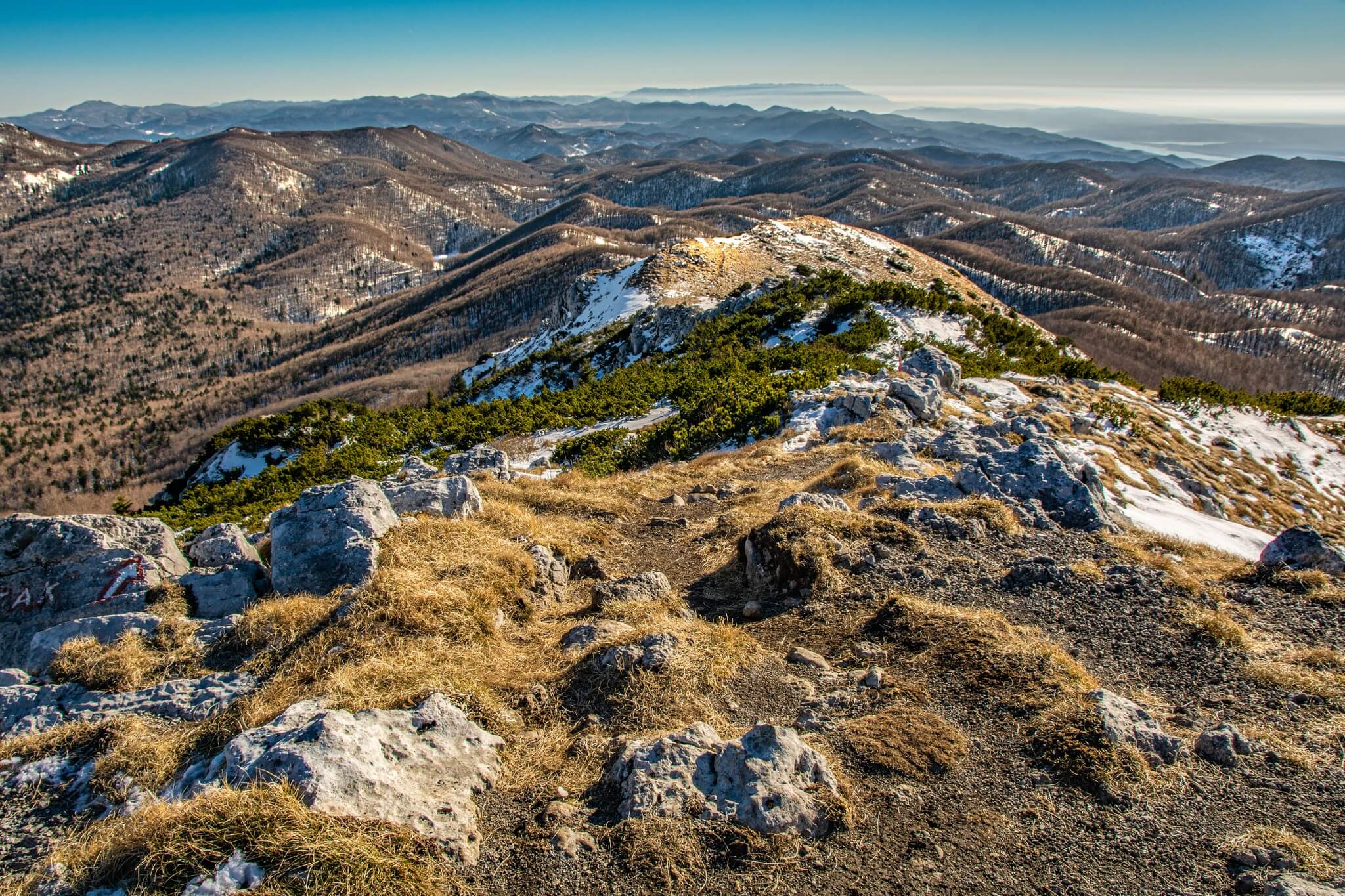 Snježnik hrvatski © Ivan Ćuća-Žentil
Snježnik hrvatski © Ivan Ćuća-Žentil
For more about Risnjak National Park, look here
Velebit
Northern Velebit National Park
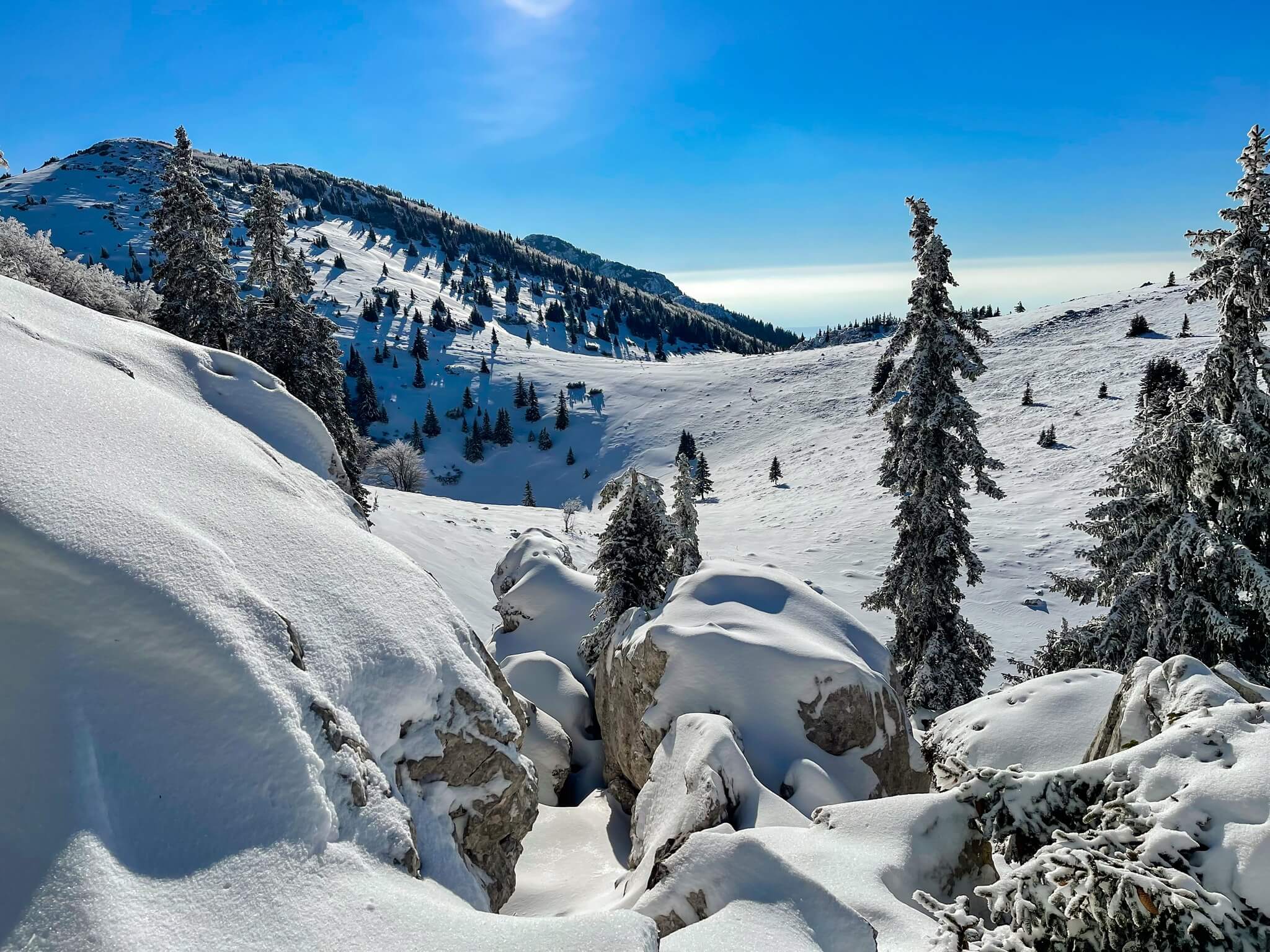 © Dejan Delač
© Dejan Delač
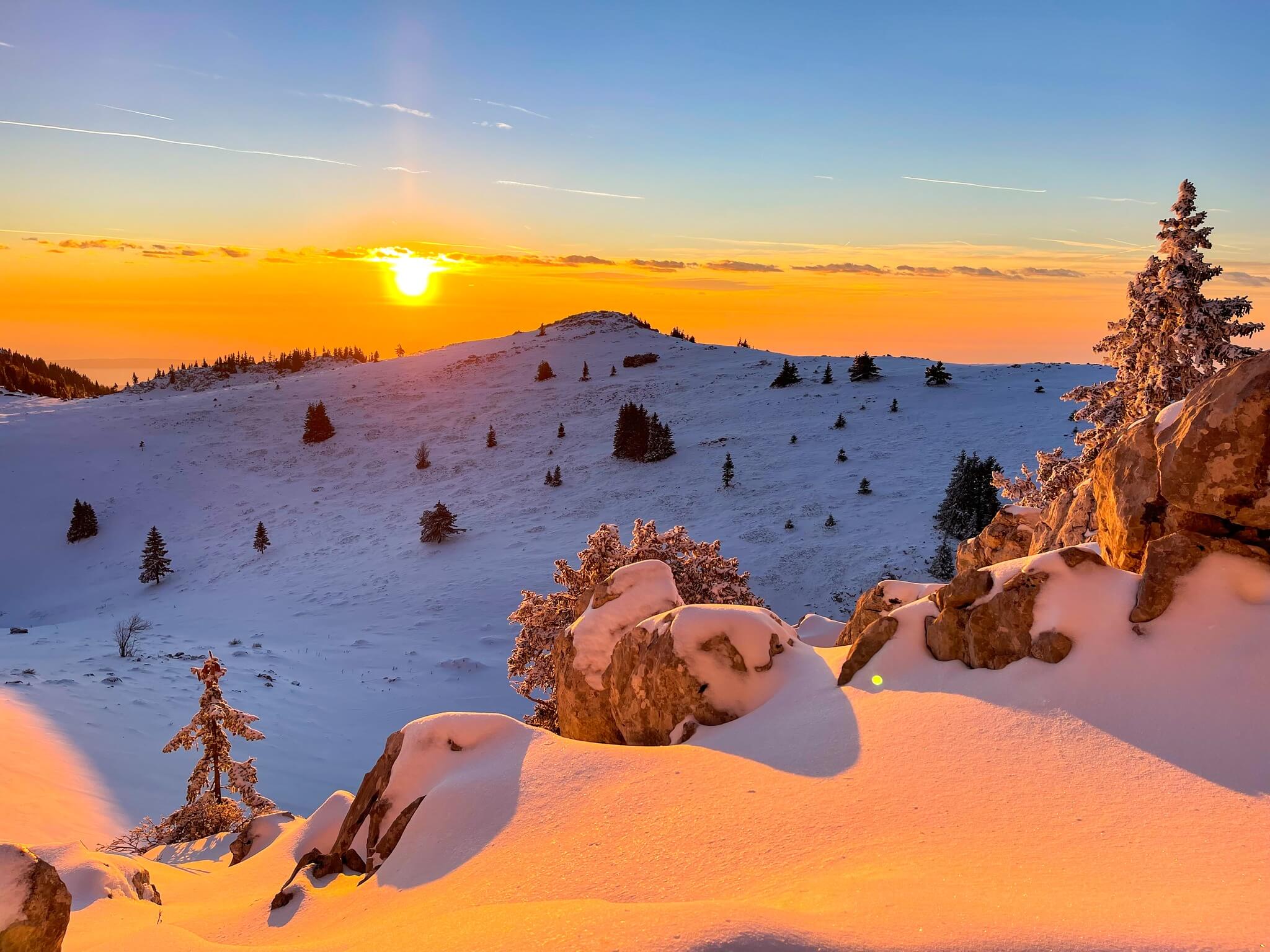 © Dejan Delač
© Dejan Delač
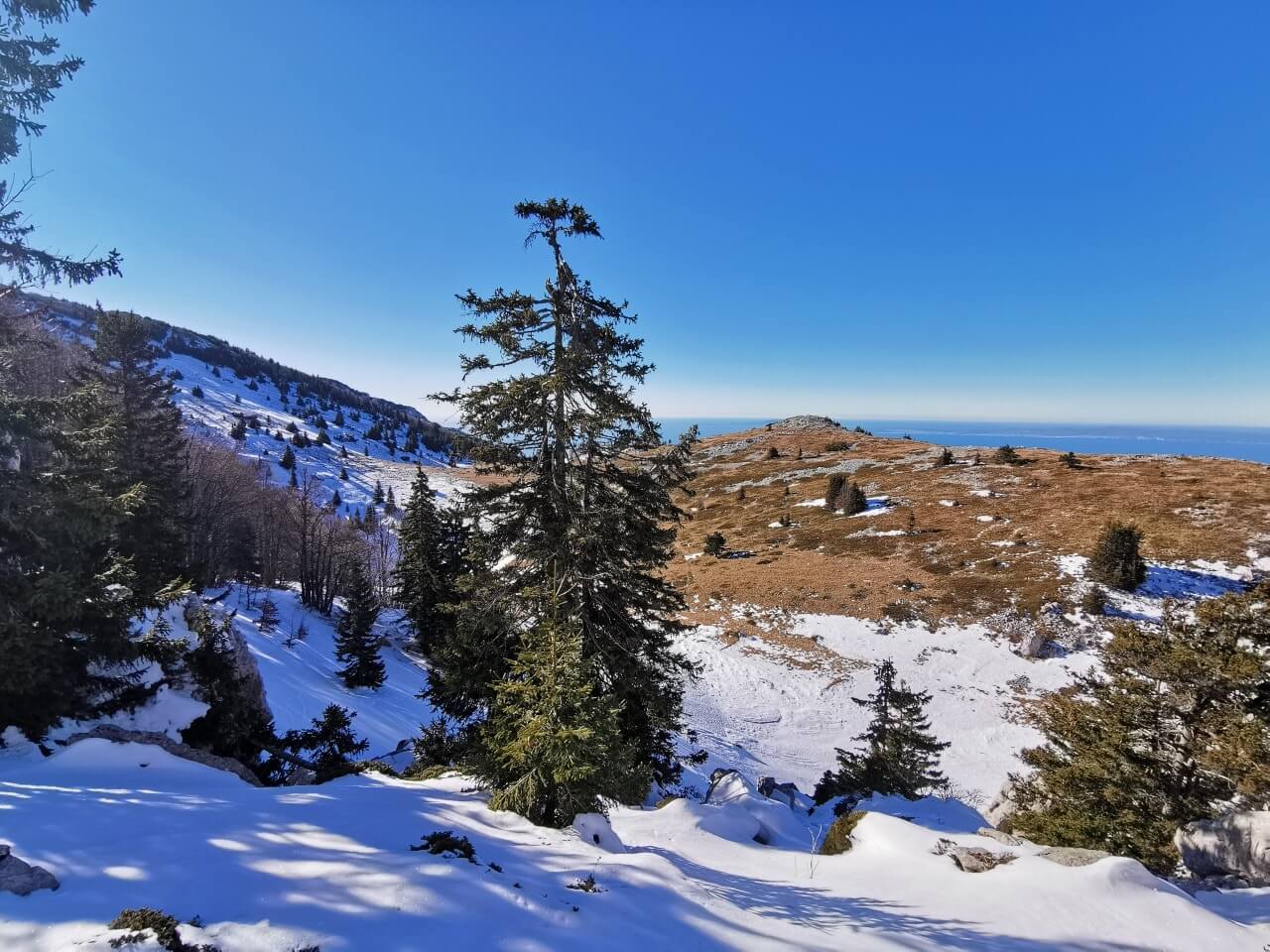 © Vedran Katalinić
© Vedran Katalinić
For more about Northern Velebit National Park, look here
Velebit Nature Park
 Ljubičko Brdo © Ivan Ćuća-Žentil
Ljubičko Brdo © Ivan Ćuća-Žentil
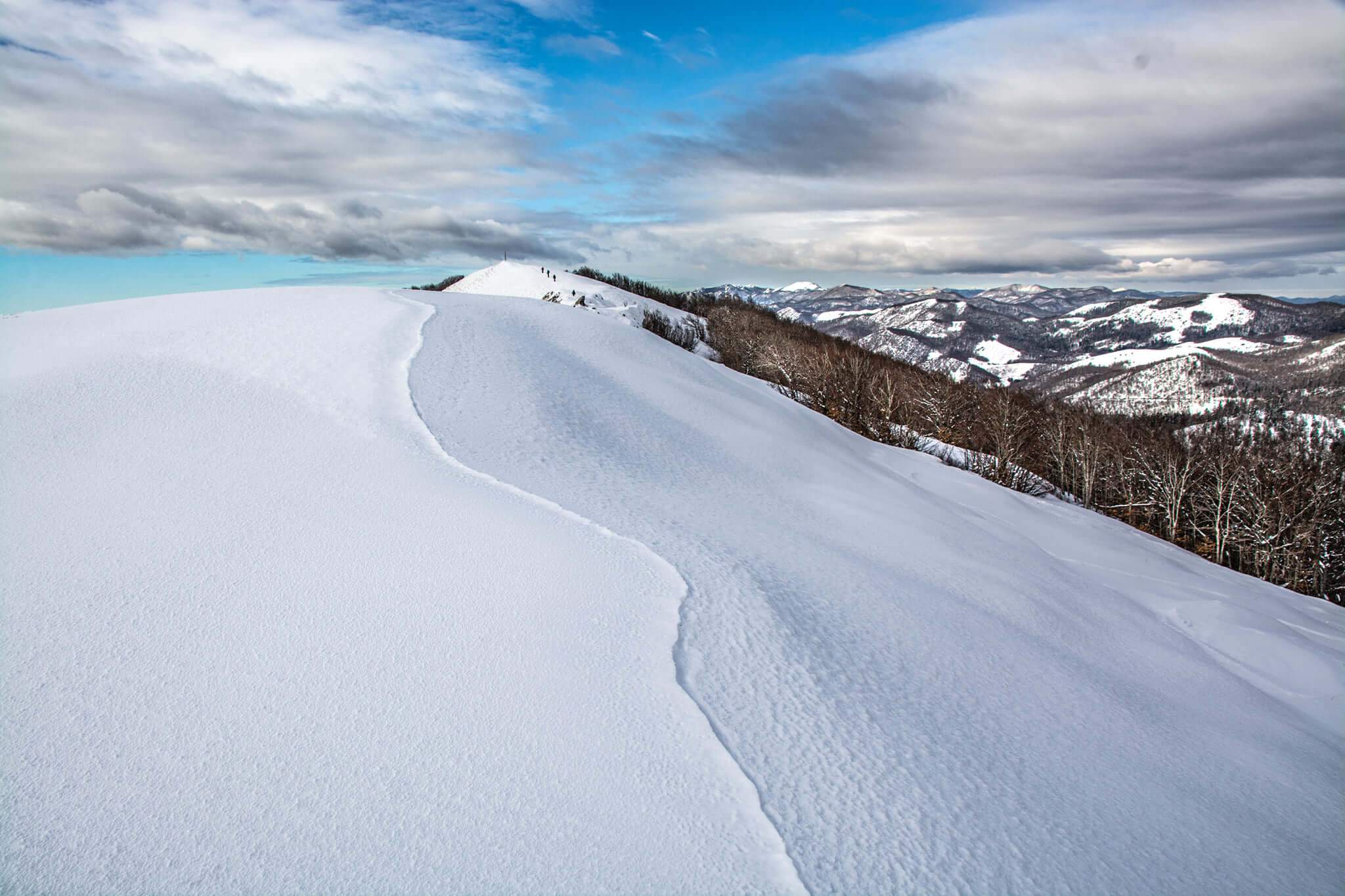 Ljubičko Brdo © Ivan Ćuća-Žentil
Ljubičko Brdo © Ivan Ćuća-Žentil
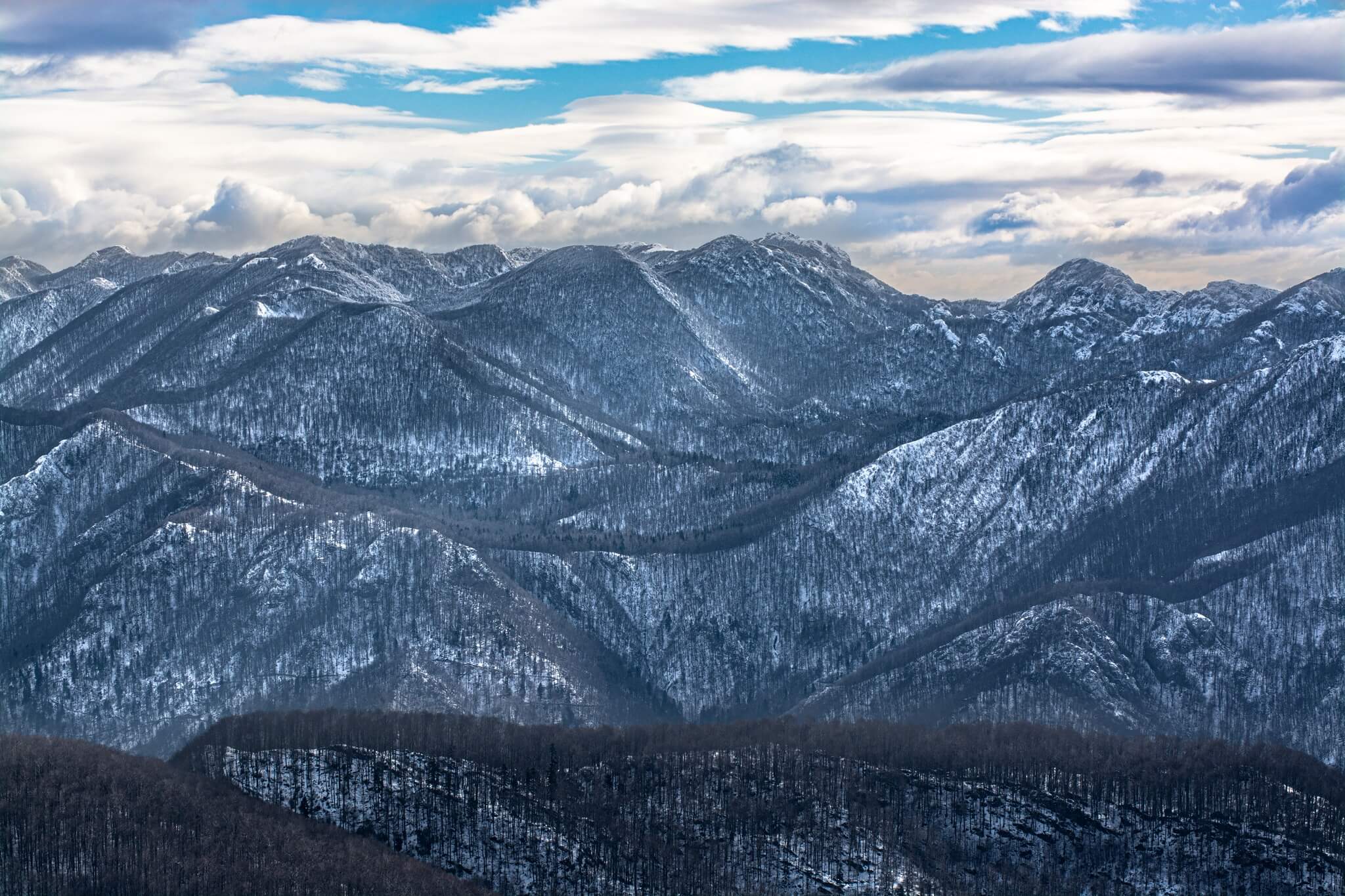 Ljubičko Brdo © Ivan Ćuća-Žentil
Ljubičko Brdo © Ivan Ćuća-Žentil
 Ljubičko Brdo © Ivan Ćuća-Žentil
Ljubičko Brdo © Ivan Ćuća-Žentil
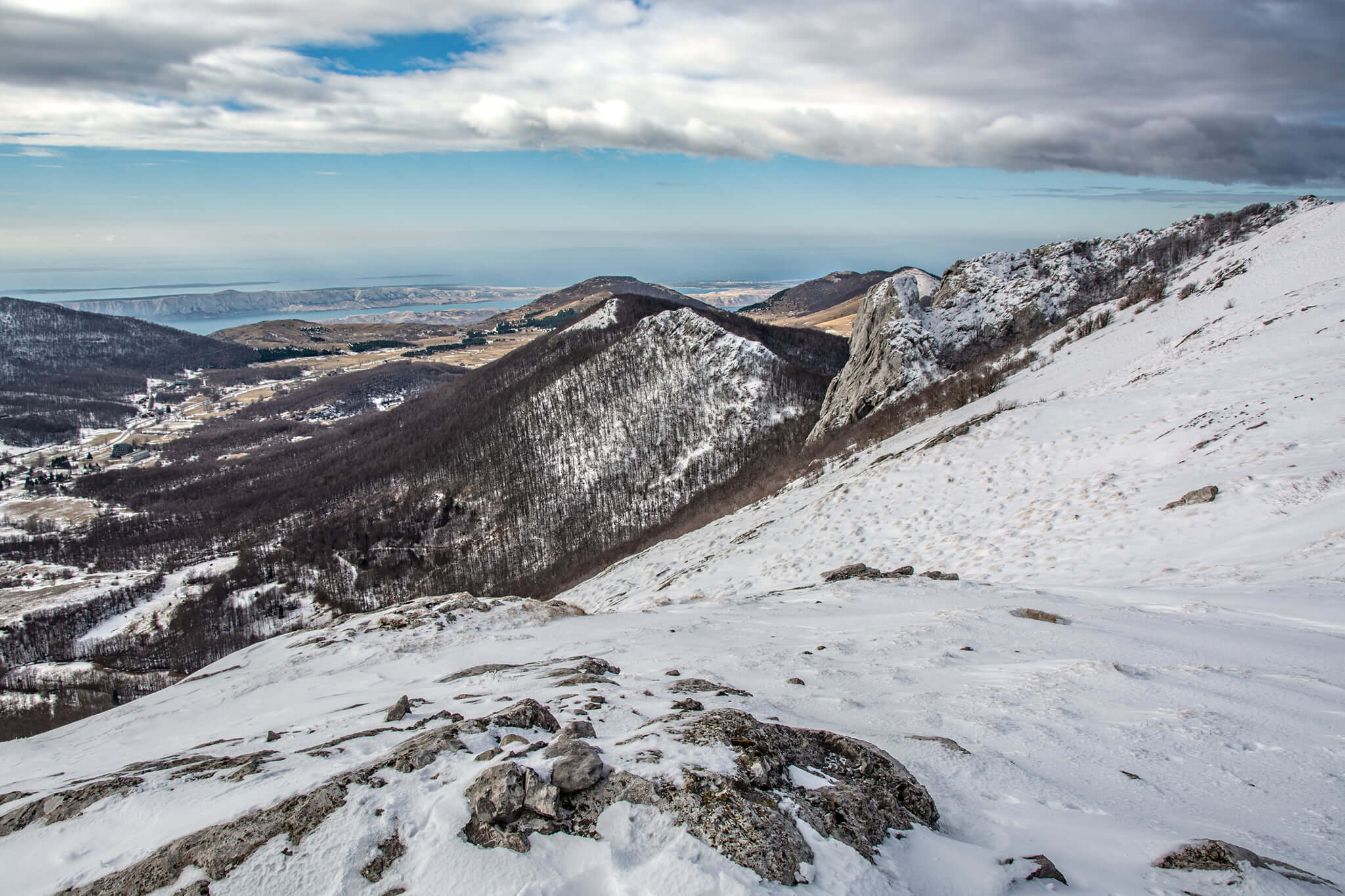 Ljubičko Brdo © Ivan Ćuća-Žentil
Ljubičko Brdo © Ivan Ćuća-Žentil
Paklenica National Park
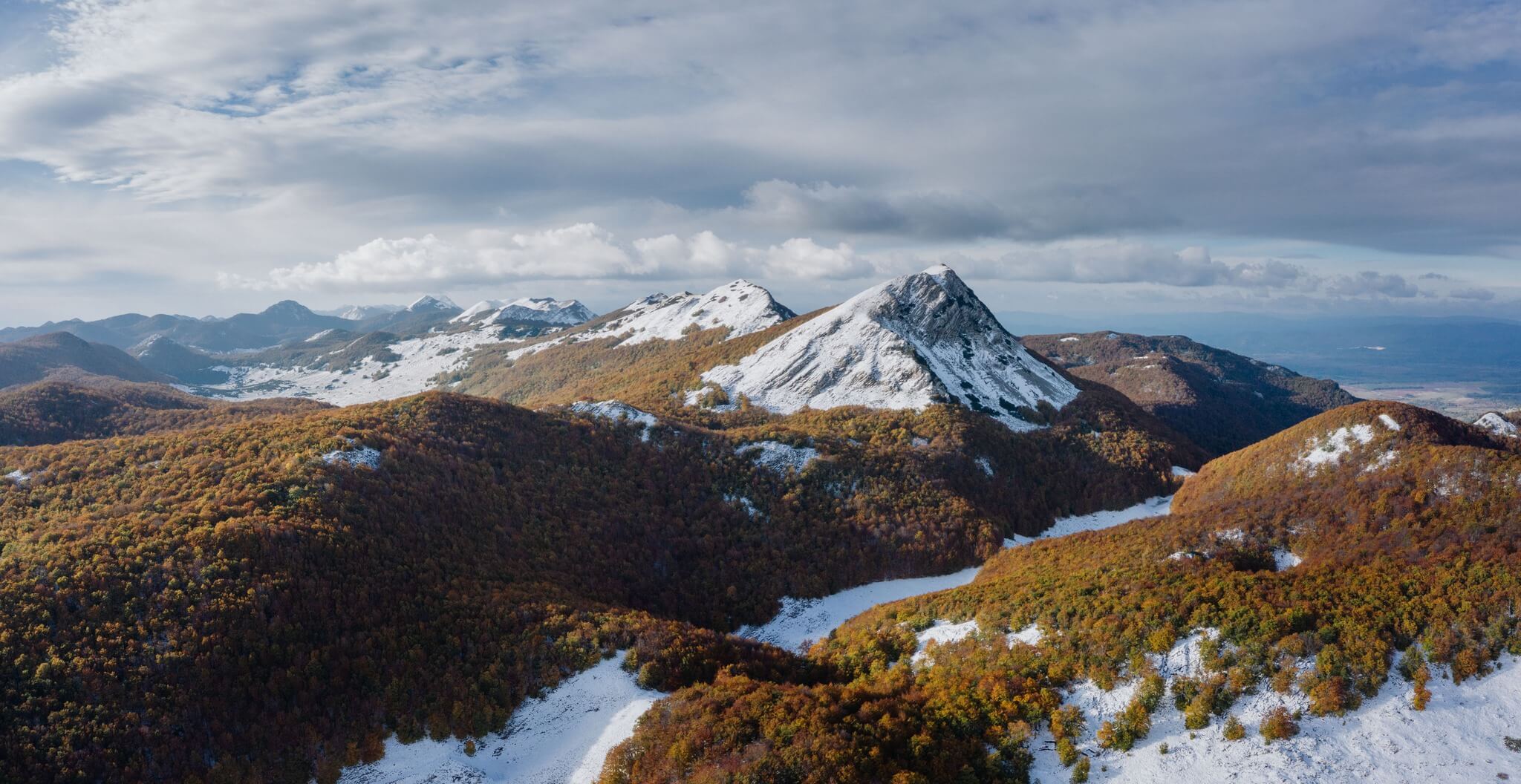 © Mario Jurina
© Mario Jurina
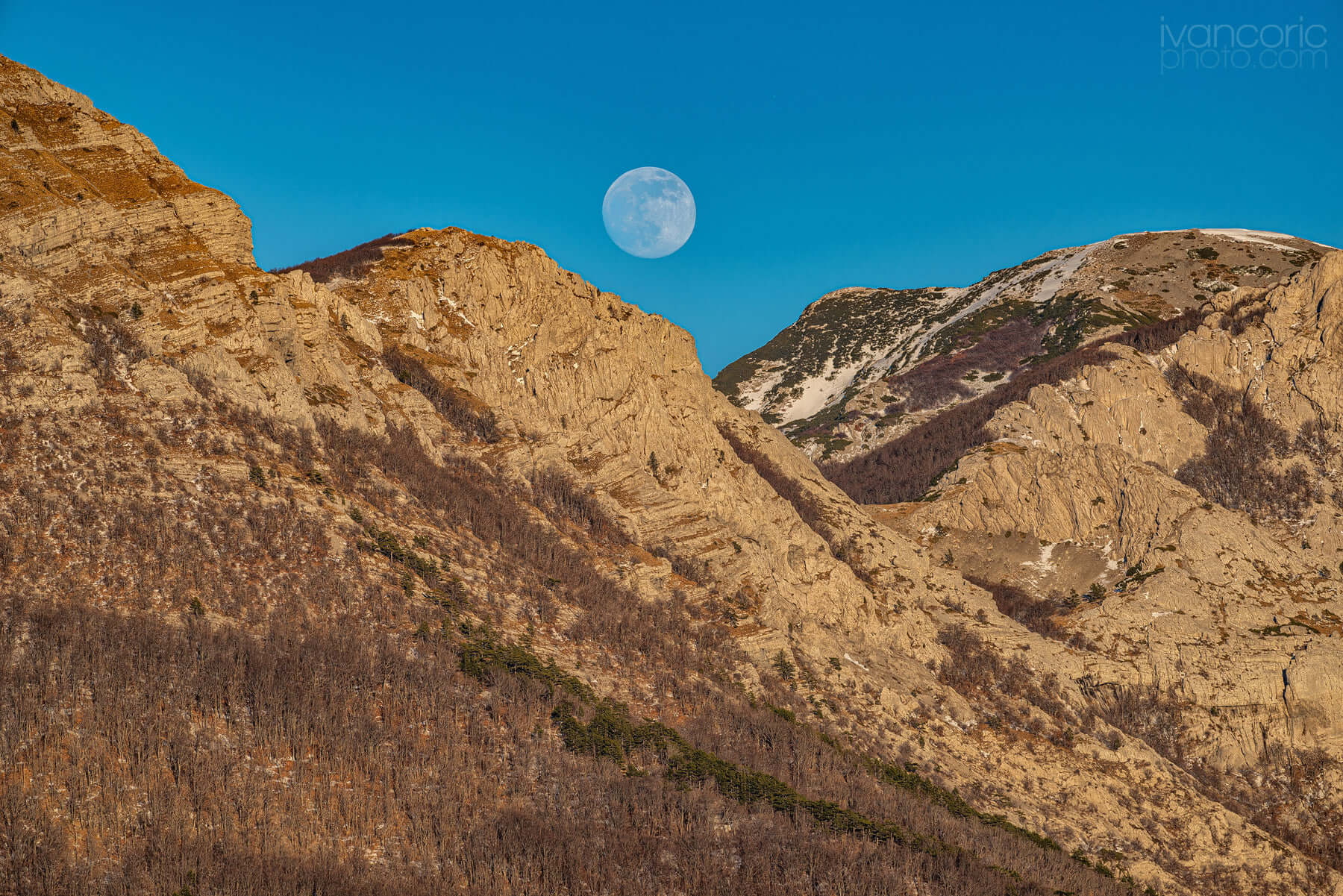 Bojinac © Ivan Coric Photography
Bojinac © Ivan Coric Photography
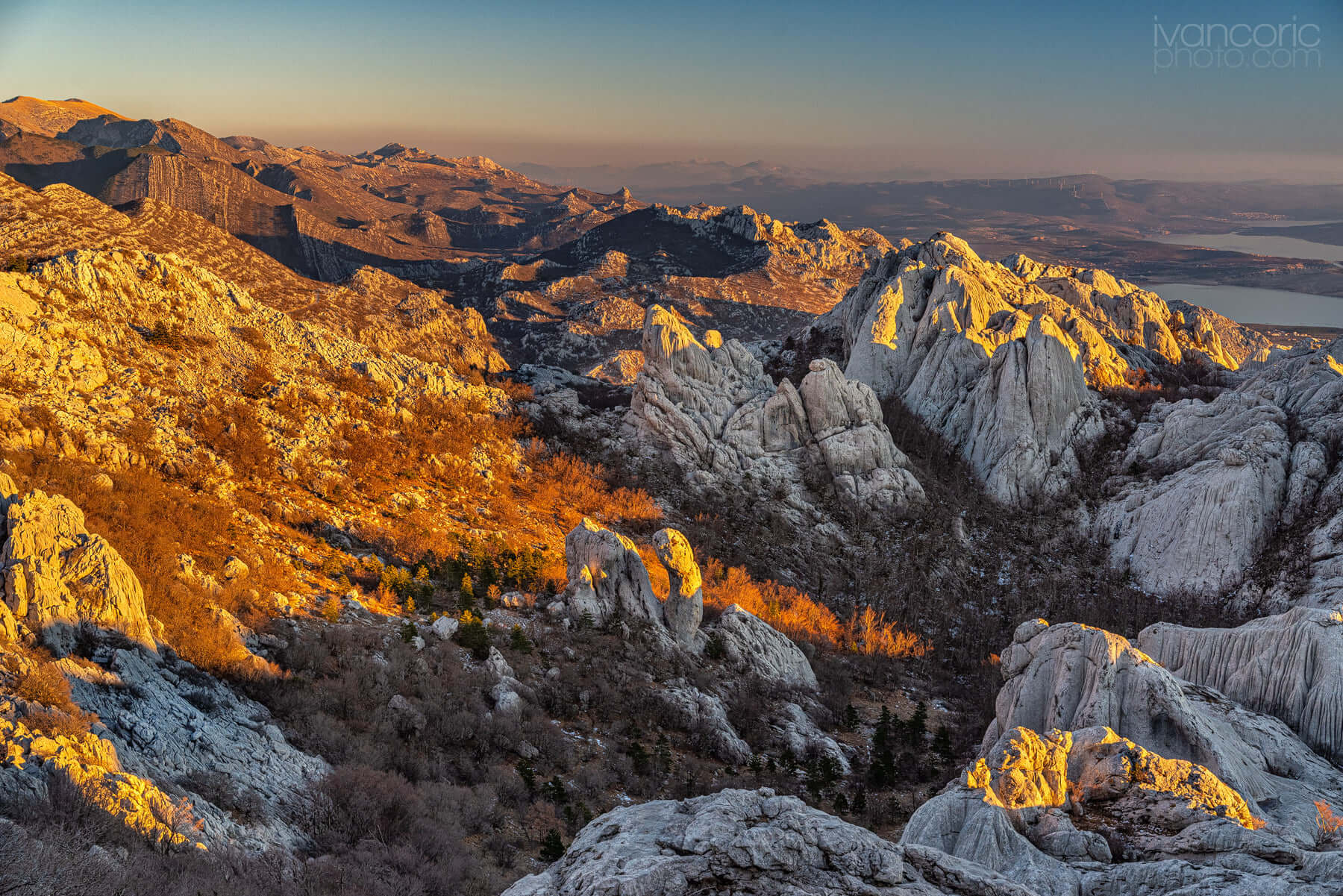 Bojinac © Ivan Coric Photography
Bojinac © Ivan Coric Photography
For more about Paklenica National Park, look here
Kloštar Podravski, Podravina and Koprivnica-Križevci County
 © Ivan Nemet
© Ivan Nemet
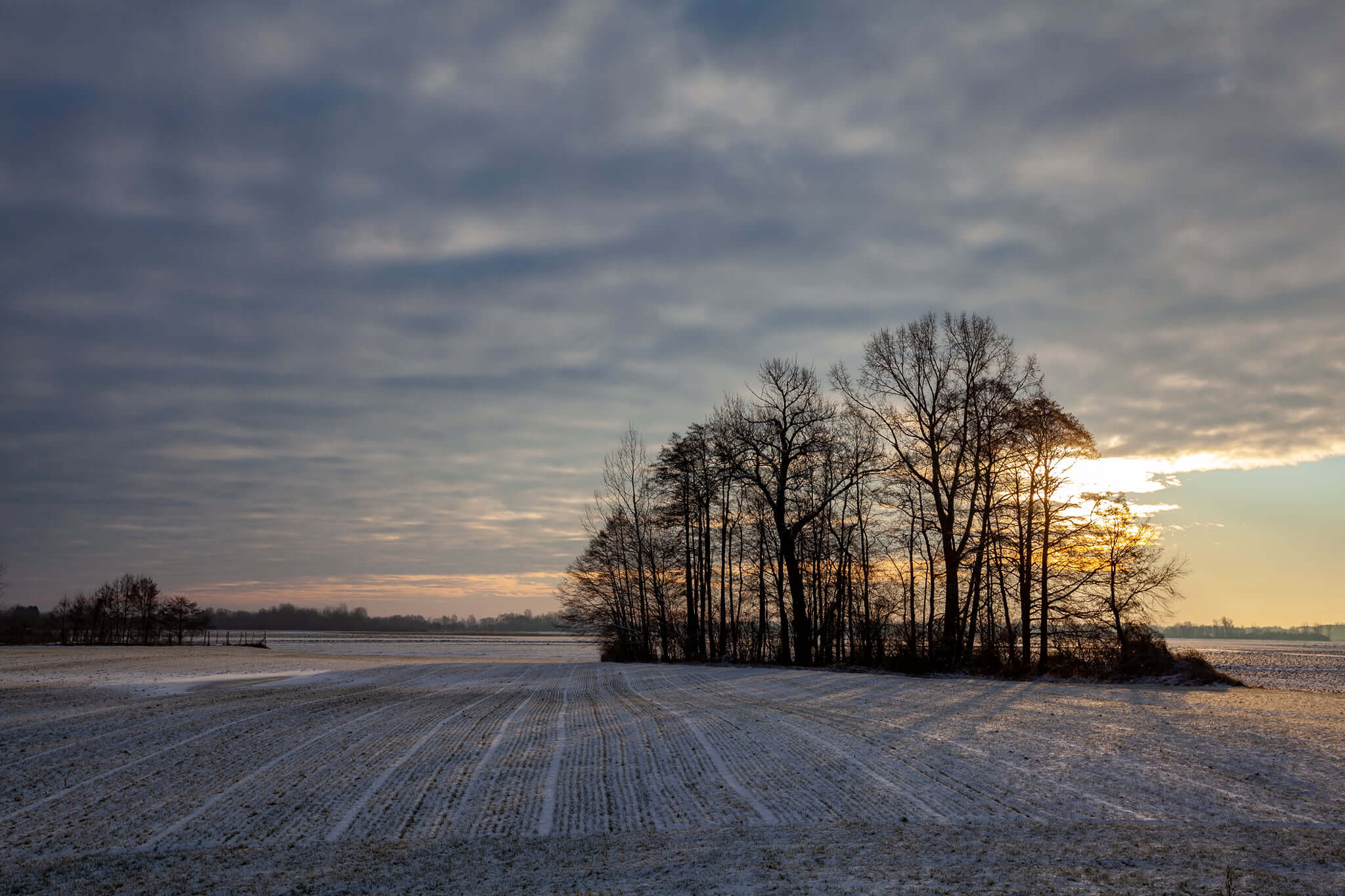 © Ivan Nemet
© Ivan Nemet
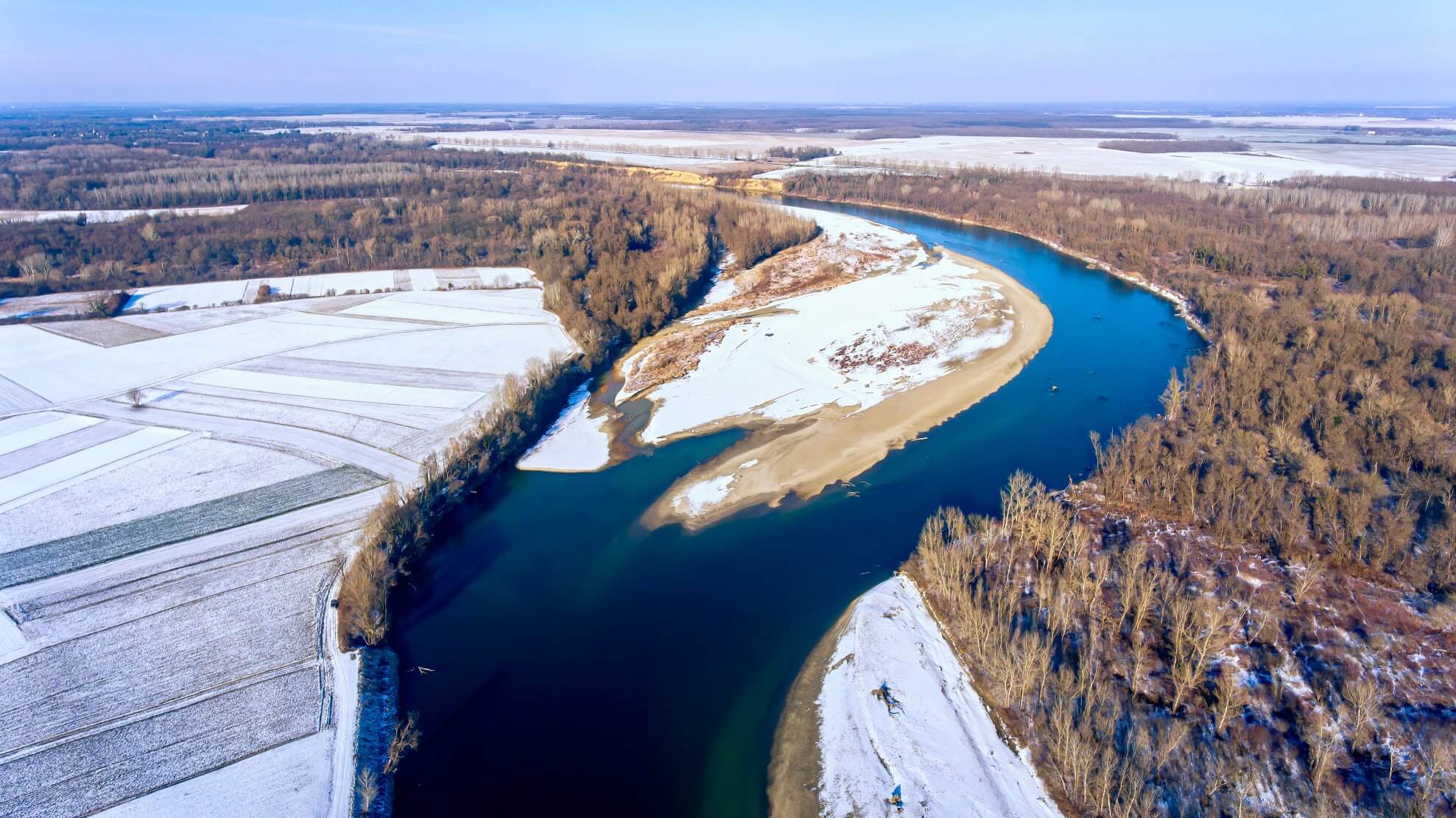 © Ivan Nemet
© Ivan Nemet
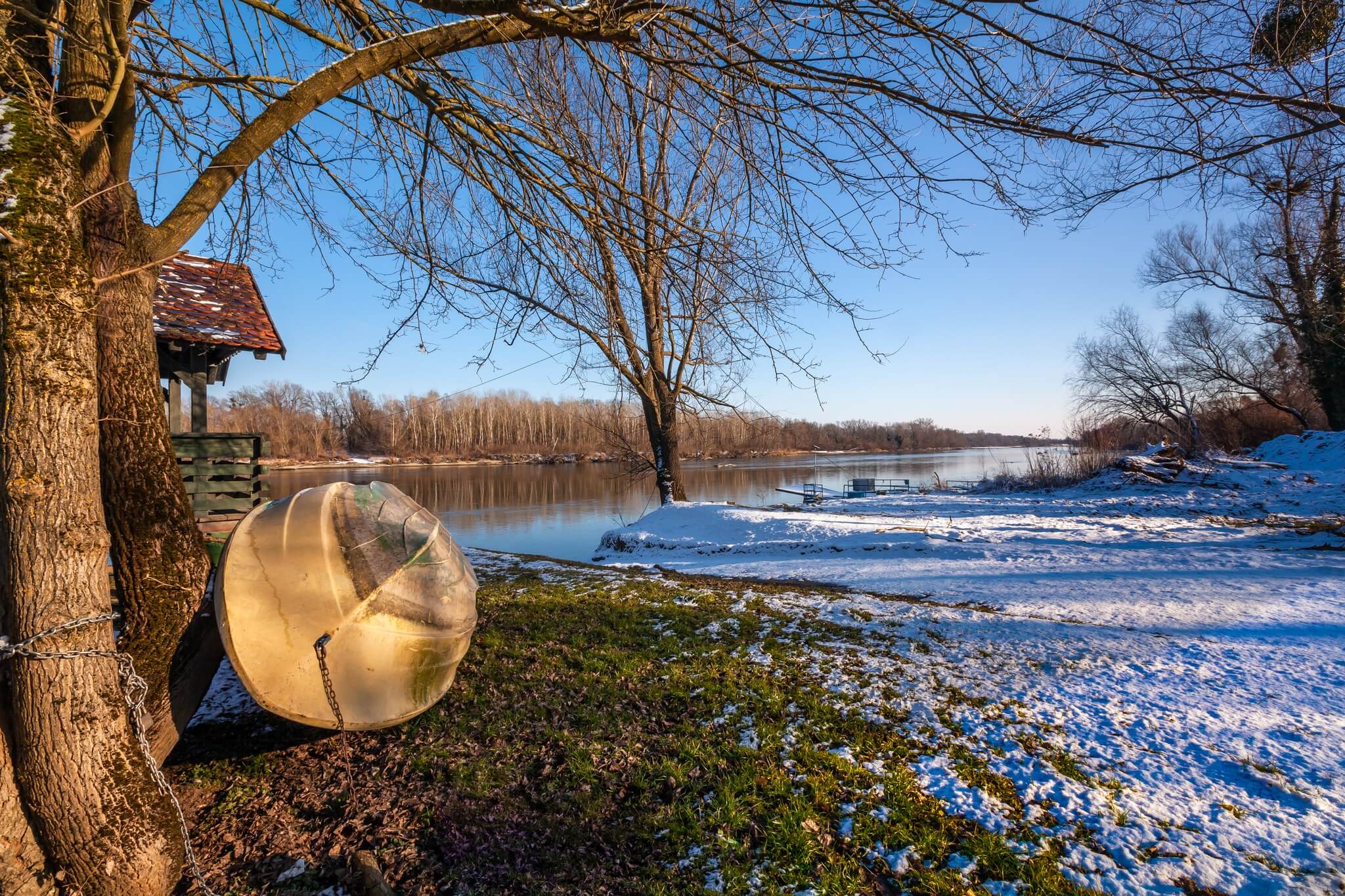 © Ivan Nemet
© Ivan Nemet
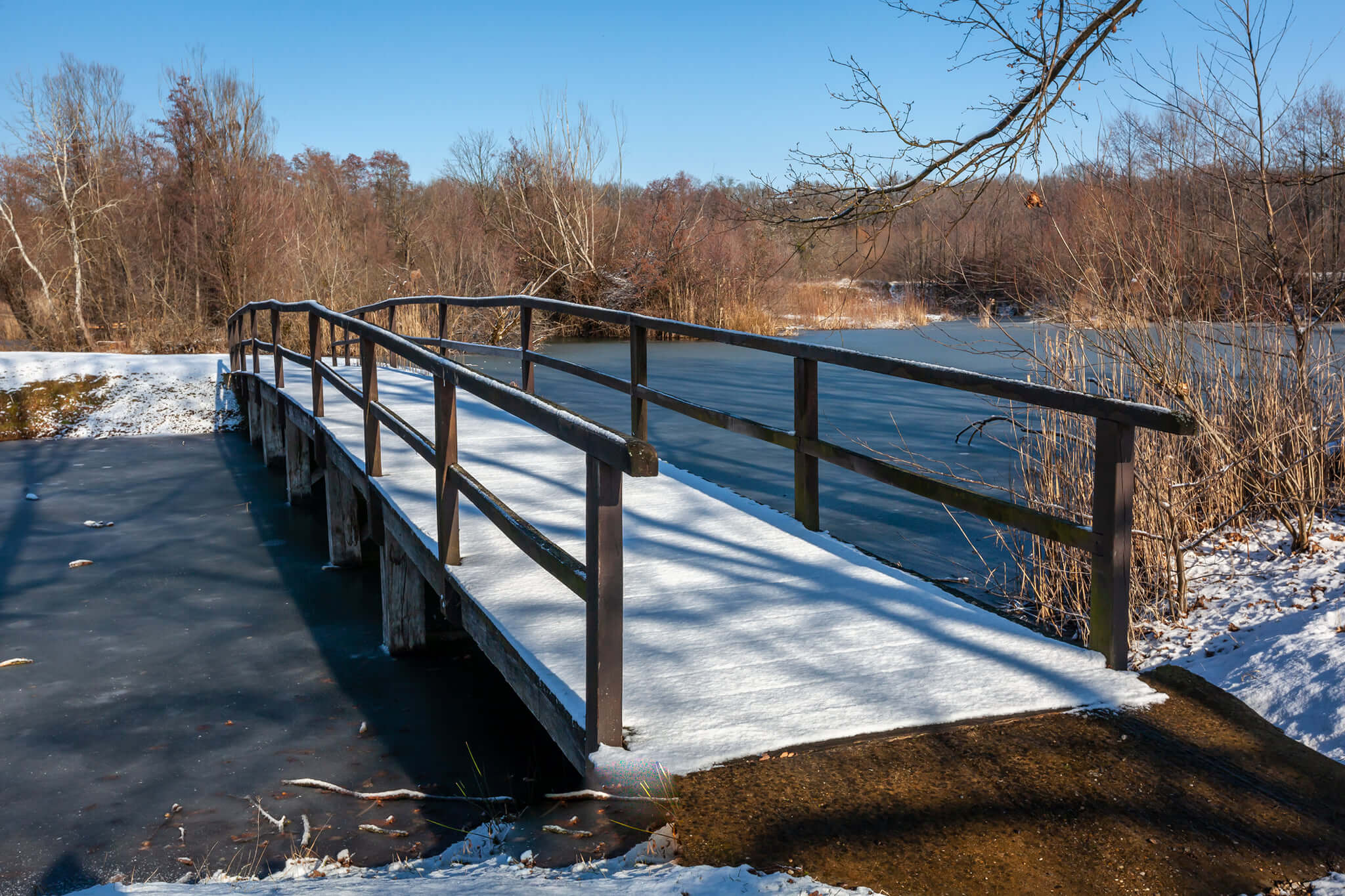 © Ivan Nemet
© Ivan Nemet
 © Ivan Nemet
© Ivan Nemet
 © Ivan Nemet
© Ivan Nemet
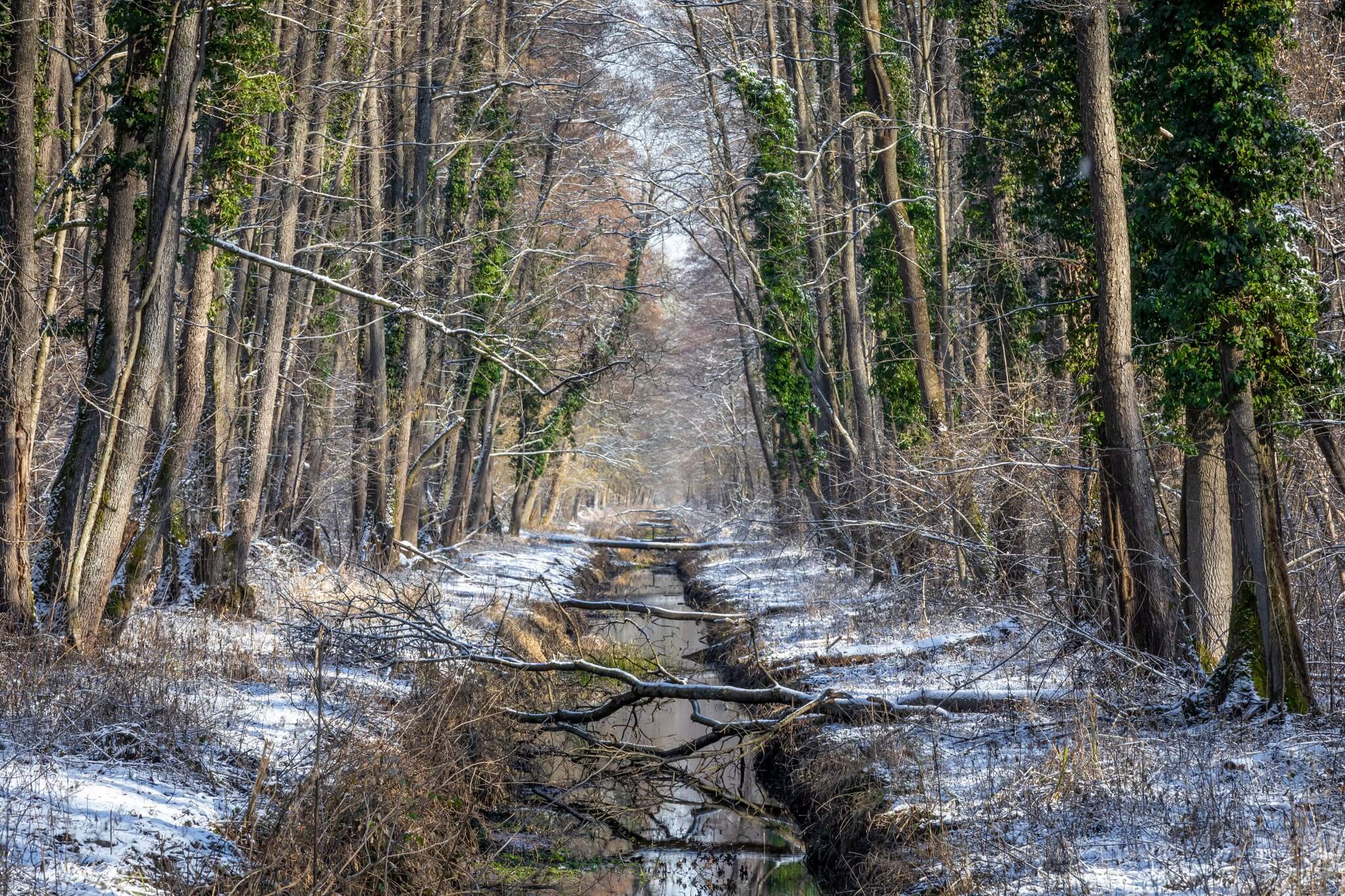 © Ivan Nemet
© Ivan Nemet
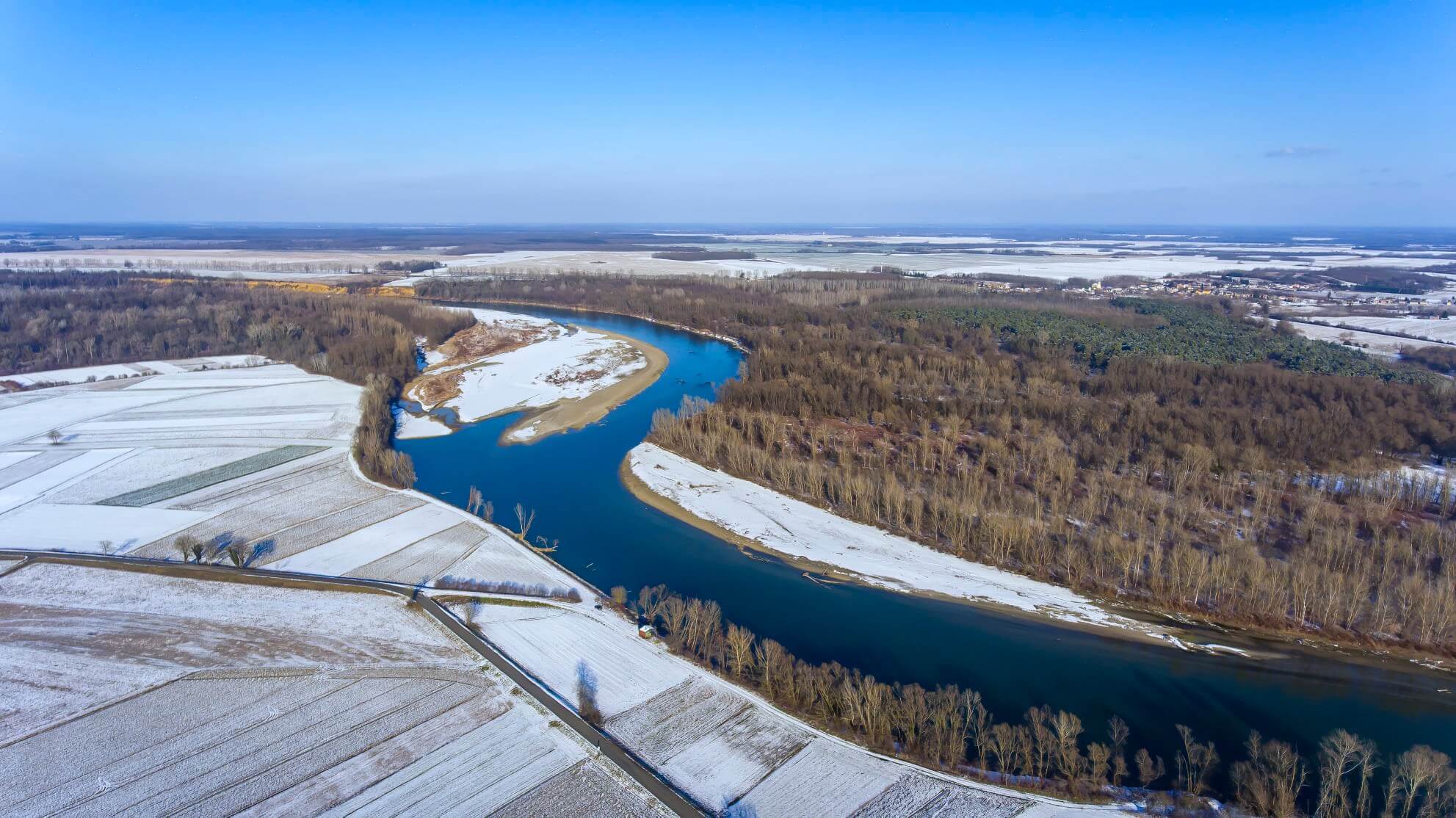 © Ivan Nemet
© Ivan Nemet
For more about the Drava river in Koprivnica-Križevci County look here. For more about the area of Podravina containing Kloštar Podravski and Đurđevac, look here
Slavonski Brod
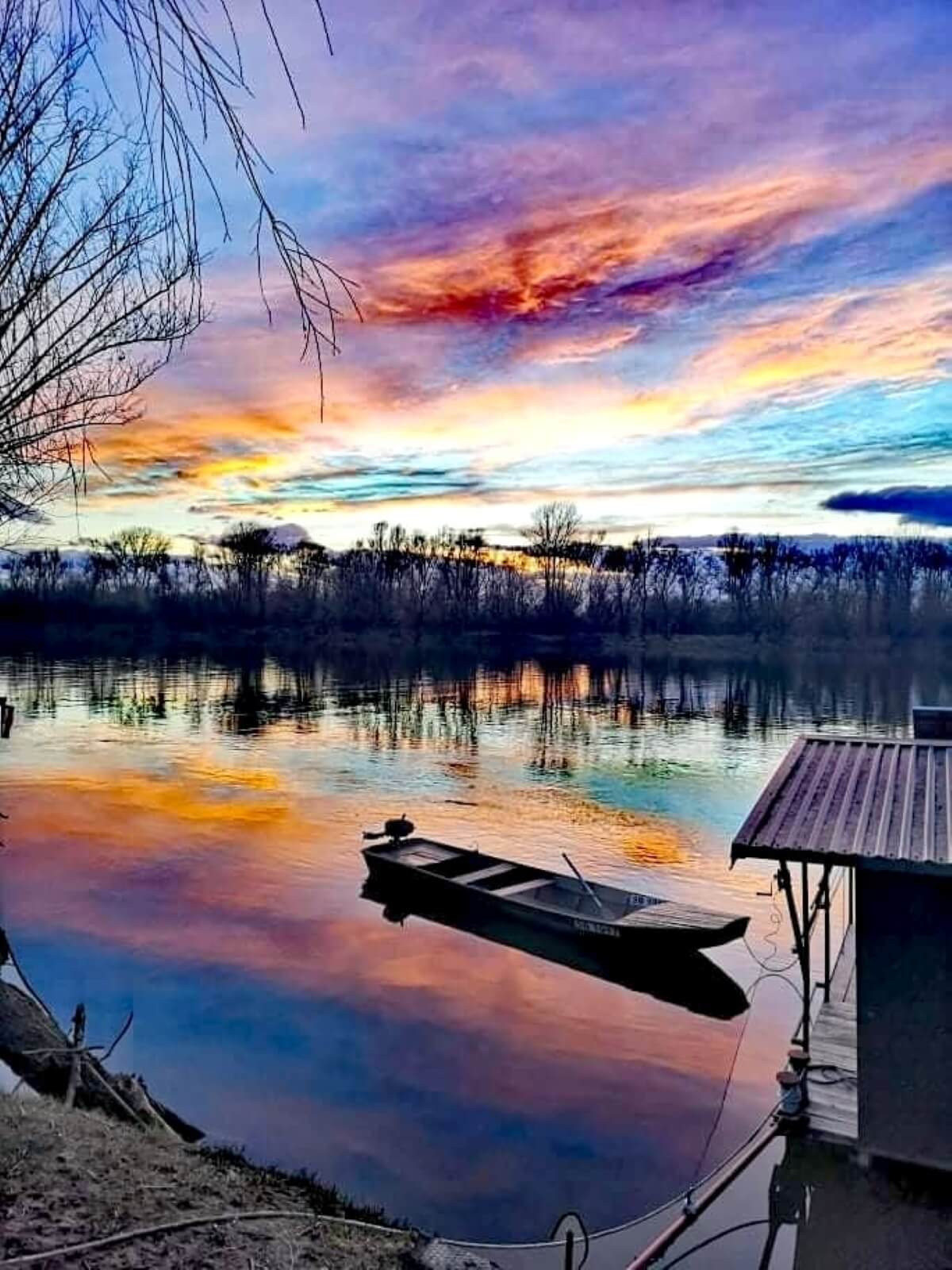 © Mirna Šikić
© Mirna Šikić
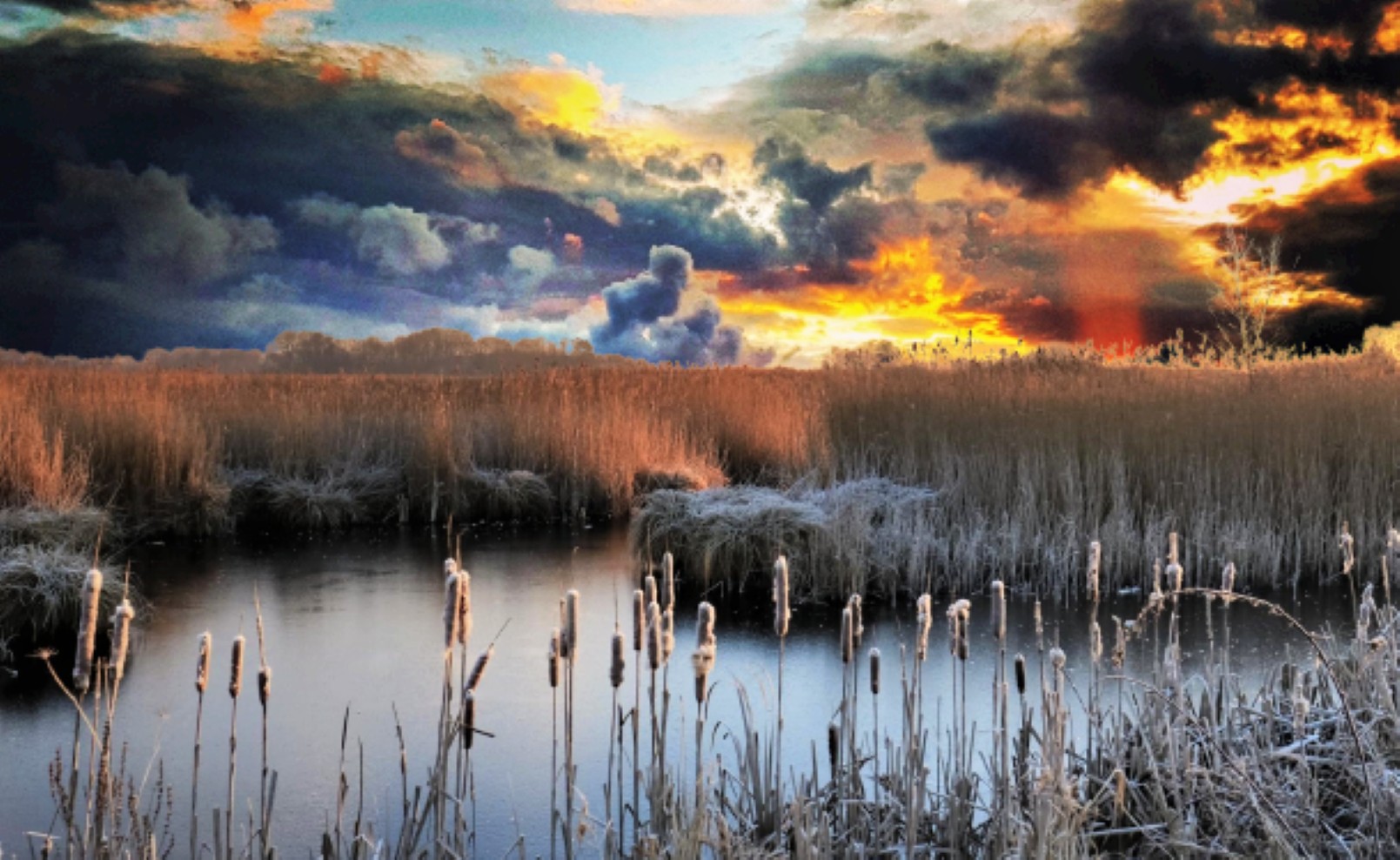 The wetlands and ponds in Oriovac near Slavonski Brod are not only home to fish - over 50 species of birds visit these waters © Antun Lukšić
The wetlands and ponds in Oriovac near Slavonski Brod are not only home to fish - over 50 species of birds visit these waters © Antun Lukšić
For more about Slavonski Brod, look here
Žumberak-Samoborsko gorje Nature Park
 The high peak of Sveti Gera, on the western edge of Žumberak-Samoborsko gorje Nature Park © Domagoj Novosel
The high peak of Sveti Gera, on the western edge of Žumberak-Samoborsko gorje Nature Park © Domagoj Novosel
The author would like to thank each of the photographers who kindly loaned their work to him for this article
Dog Protects Injured Mountaineer on Velebit's Vaganski Vrh, HGSS Saves the Day
January 3, 2022 - HGSS members performed a complex and challenging rescue operation on Sunday night. After almost 13 hours, they pulled out an injured mountaineer, who slipped with his Alaskan Malamute North to a depth of 150 meters on Vaganski Vrh.
Fortunately, two friends were with the injured mountaineer, who immediately called for help and were in contact with the rescuers at all times, report 24 Sata.
The head of the HGSS Gospić, Josip Brozičević, states that the mountaineers were experienced and had all the necessary equipment, but a combination of unfortunate circumstances led to this accident.
"The mountaineers climbed the Velebit hiking trail to Vaganski vrh. When descending, the dog was afraid to cross the icy surface. Its owner received it to pass it on. The moment he wanted to lower him to the ground, the dog began to slide on the icy ground. He was on a leash and tied to the owner, and as he slipped into the pit, he dragged his owner behind him," said Brozičević.
HGSS members received a report at 6:30 pm, and 27 rescuers from Gospić, Zadar, Split, and Istria reached the injured mountaineer and dog that had been in the pit for five hours. Unfortunately, the action on the inaccessible terrain, on the highest peak of Velebit, was hampered by snow and ice, and landslides and broken trees blocked the trails.
"The dog was curled up next to the owner in the pit the entire time; he warmed his owner with his body, thus preventing the mountaineer's significant hypothermia who suffered a severe fracture of the lower leg and ankle when he fell. In addition, he looked quite sober mentally and physically," stated Brozičević.
After rescuers pulled the victim and the dog out of the pit, the hypothermic mountaineer was first warmed, and his injured leg immobilized. His dog North, who passed without injuries, did not want to be separated from the owner for even a moment. Instead, he curled up on him while on a stretcher, while rescuers lowered him from the mountain on steep and icy terrain Transportation began at 0:20.
"When we started with the transport, we saw that it would not be possible to transport the victim and the dog together. Since the dog was unharmed, he was taken over by one of the rescuers, but even then, he was near the owner," said Brozičević.
After more than seven hours of transport, the injured mountaineer was taken to the ambulance, to the Gospić General Hospital, and then to the Zadar Hospital, where he underwent surgery.
HGSS members warn that hiking is dangerous in winter conditions, regardless of how experienced the mountaineer is and how well they prepare for the route. This accident has shown that only one wrong step is enough, after which there is no going back. Vaganski vrh is visited almost daily by mountaineers. The only exception is when the most severe winter conditions prevail on the mountain.
To read more about lifestyle in Croatia, follow TCN's dedicated page.
Sveti Rok MTB Tour by Heart of Velebit Celebrates 5 Years of Cycling
May 26, 2021 - This weekend is surely a special one for the heart of Velebit. The Sveti Rok MTB Tour bicycle competition through the fields of Lika and the area of Velebit around Cnropac will celebrate five successful years of organization with several races, exhibitions, and a Matej Meštrović concert.
As reported by turistickeprice.hr, Sveti Rok MTB Tour is the name of the traditional, fifth in a row bicycle race through the fields of Lika and the area of Velebit around Crnopac, Tulovi Gredi and Zira. This is the first activity this year out of a total of seven that will be held under the common name ‘‘Srce Velebit’’, or ‘‘Heart of Velebit’’. Every day, as part of the Sveti Rok MTB Tour, three cycling or cycling-hiking tours with guides from the Heart of Velebit will be offered. One of them will be an easier, family route through the Lika fields, while two will be more demanding on Velebit.
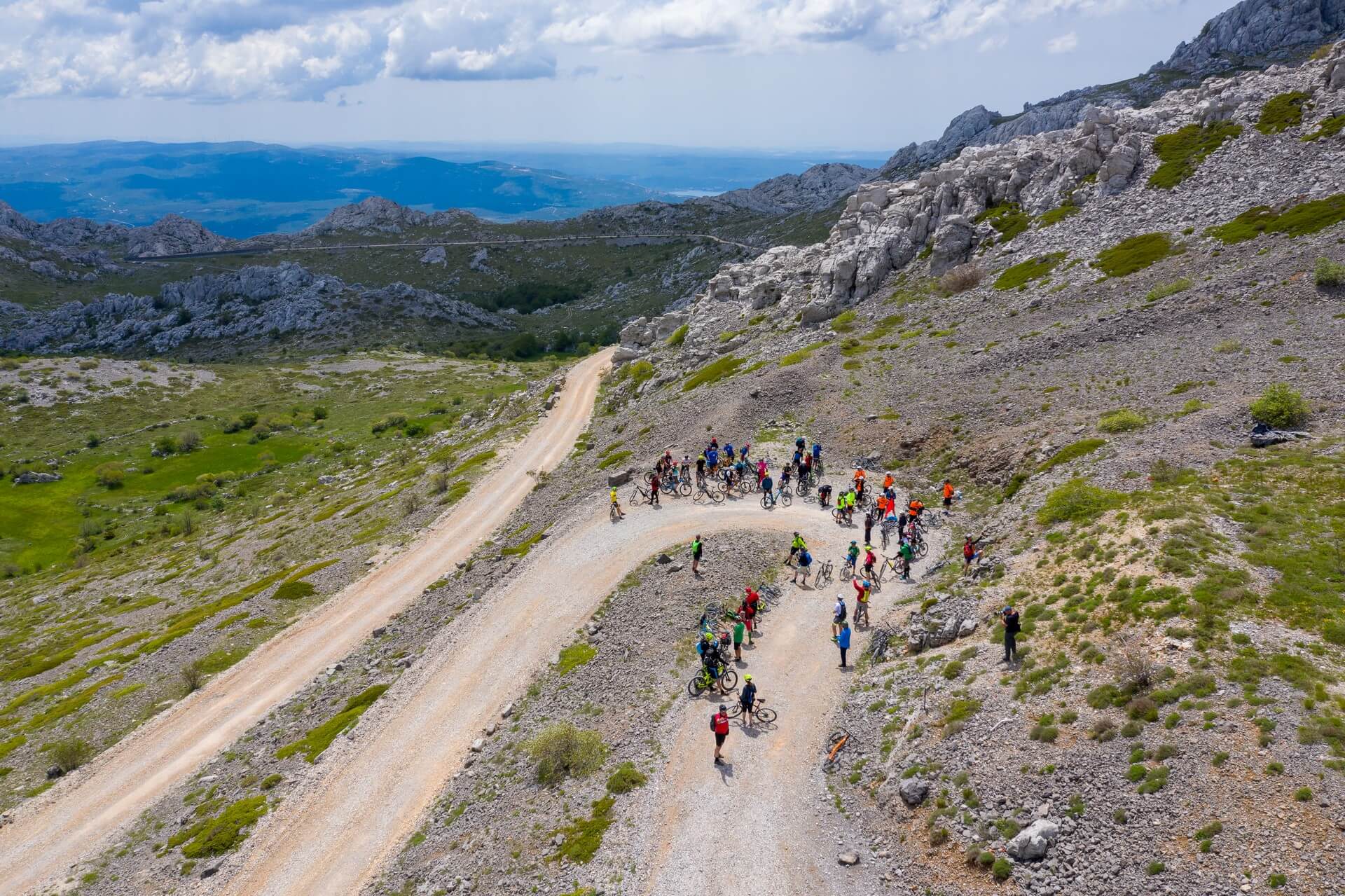
Credit: Heart of Velebit
On the first day of the cycling race, on May 28, the new bike & hike Staza Malog Princa (Trail of the Little Prince) will be presented. It is intended for the most prepared, and this very difficult trail is covered by 40 kilometers by bicycle, and participants will then have another four hours of walking on very demanding terrain. Due to the complexity of the terrain and the safety of the participants, the number is limited to 30 participants.
For participants with less driving experience on difficult terrains, a light route, Suvajski bunari (Suvajski wells), with a length of about 35 kilometers with an altitude difference of 350 meters has been prepared. The third route offered on the first day of the cycling race is the Velebit šišmiši (Velebit bats), and it is a night bike ride through Velebit for participants with previous experience and equipment for night driving, who should expect 25 kilometers of forest roads.
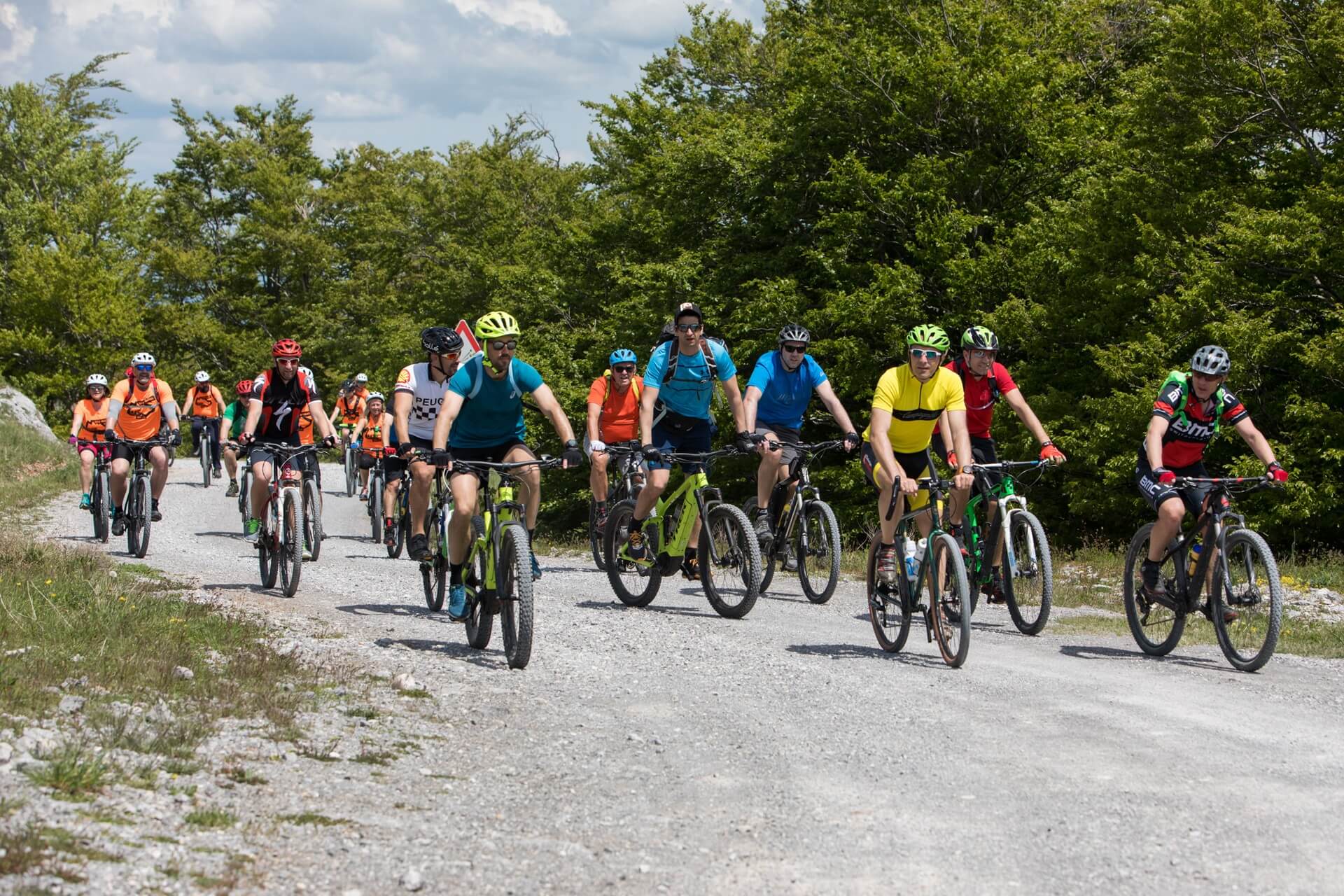
Credit: Heart of Velebit
Tulove Grede - bike & hike is the first route in Saturday's offer of cycling. The lighter version via Mali Alan is 42 kilometers long with 2 and a half hours of ascent and descent from the top, and the more advanced one goes along the Road to Hell route through Male Jasle, 60 kilometers long with 2 and a half hours of ascent and descent from the top. The Heart of Velebit Epic is very heavy, fitness, and technically demanding. Perhaps the most beautiful route in Croatia. It is 62 kilometers long, from 553 to 1211 meters above sea level, and a descent to the starting point. Winnetou - from Lika to the sea, is medium and technically demanding, 37 kilometers long. The reward for the effort is a descent from 1050 meters to the sea, for swimming.
On Saturday, May 29, a special program was prepared to mark the first five successful years of the Heart of Velebit. A celebratory concert of the famous pianist Matej Meštrović (author of the album Sounds of Velebit) will be held for all participants at the Cvituša Excursion Site, with video recording and millennial photography with a camera and drone.
On the last day of the Sveti Rok MTB Tour, on Sunday, May 30, participants can expect Zir - bike & hike, an easy route that everyone can ride, 40 kilometers of Lika fields with springs and rivers, then the Mile vode / River Deep Mountain High, which is a difficult route of 65 kilometers and Mali Epic, a shortened difficult and technically demanding bike route. From the initial 553 meters above sea level, there is an ascent along the Master Road to 1001 meters, then to 1230 meters, followed by a descent along a forest road to 580 meters above sea level, rewarding the cyclists with a road descent to Sveti Rok through the forests and paths of Velebit.
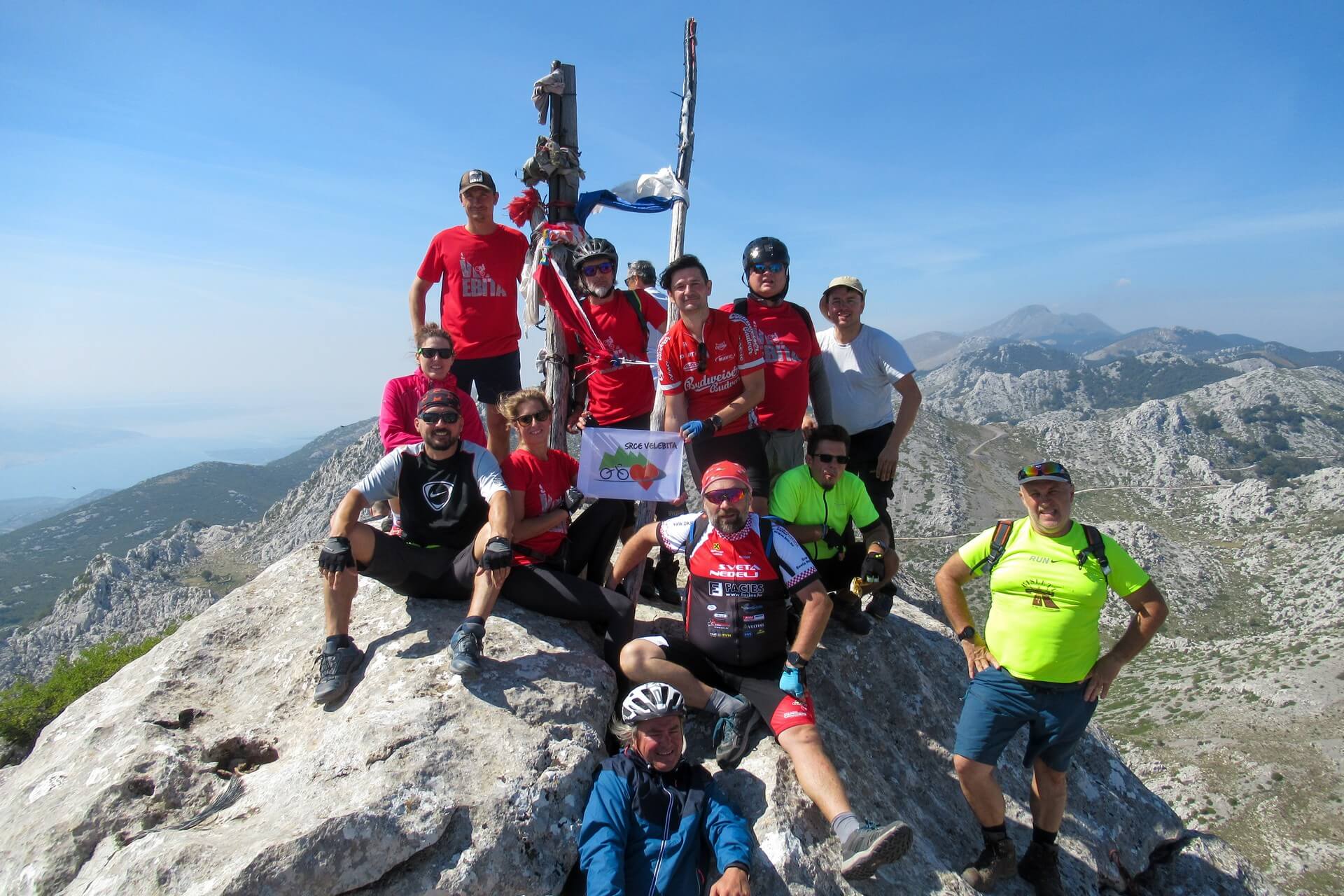
Credit: Heart of Velebit
As part of the cycling race, Lika family farms will also present themselves. In front of Hostel Sveti Rok, there will be a sales exhibition of delicacies and souvenirs before leaving for home.
Those interested can participate for one, two, or all three days. You can find more about the cycling race and how to register HERE.
Velebit Nature Park is one of the 12 natural parks in Croatia, and you can learn more about them in Total Croatia's Guide to National and Natural Parks in Croatia, HERE. Now you can find Total Croatia articles in your language!
For more information about cycling in Croatia, go to Total Croatia's dedicated page.
For more on travel in Croatia, follow TCN's dedicated page.
Croatian Couple Completed Via Adriatica Trail in 54 Days, Liked Dinara Most
February 24, 2021 – TCN recently interviewed Josipa and Matija on their 1,100 kilometers long journey, and now this Croatian couple completed the Via Adriatica trail with success... but not without the headache of the demanding Croatian mountain regions and changeable and unpredictable weather conditions.
Josipa and Matija set off on the Via Adriatica trail on January 1, 2021, starting from Prevlaka, the southermost peninsula in Croatia. The last time we talked to them was one month ago when they were at Svilaja mountain, not even half of their journey. Yesterday, after 54 sunny, rainy, snowy, foggy, and windy days, this Croatian couple completed the Via Adriatica trail.

In the meantime, the Dinara mountain, a newly declared Croatian 12th National Park, amazed them the most, while Velebit mountain showed all of its natural power and broke them with snowstorms. However, after successfully overcoming all the climbs, peaks, sections, weather troubles, they finished their journey at Cape Kamenjak in Istria.
Lost in a minefield
Since Svilaja mountain, when we last heard from each other, the weather conditions created many problems for Josipa and Matija. First, due to the heavy rain, they could not move from the shelter for three days, and the weather forecast was getting worse and worse. They had to move on because there was no point in waiting anymore.
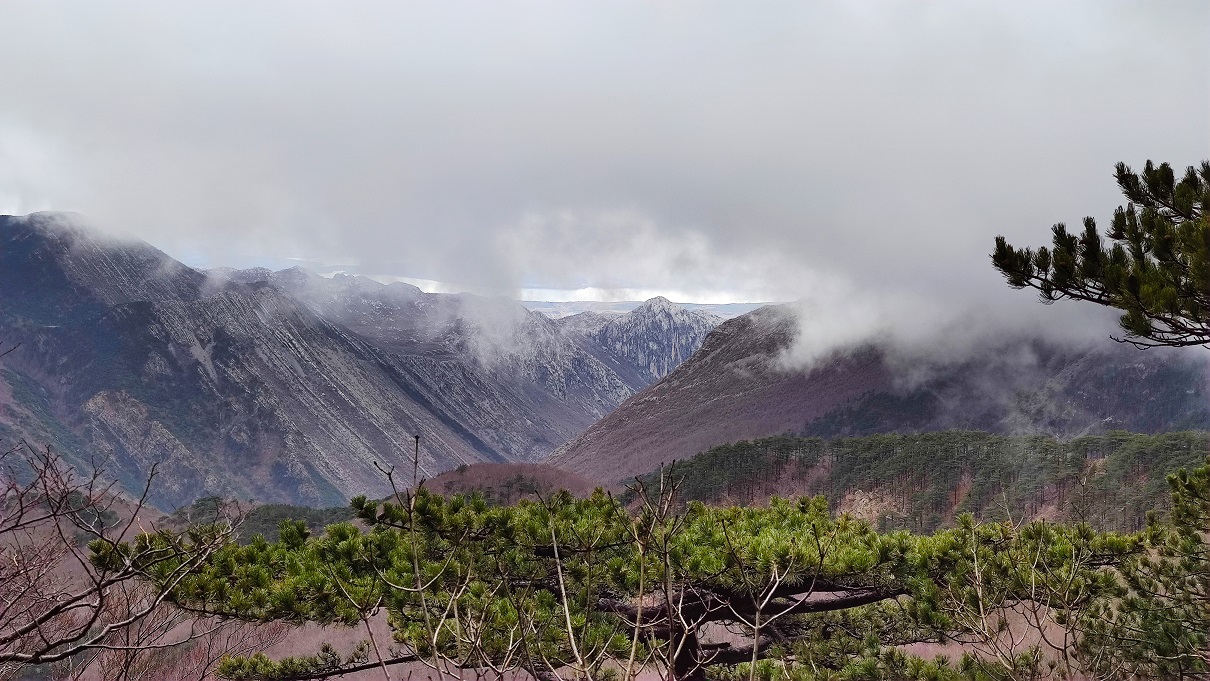
On the Dinara mountain, on the way to a shelter called "Vjetre s Dinare" ("Wind from Dinara" meaning Croatian stormy wind bura), they went through the fog, rain, icy rain, wind, and finally – through a minefield.
"We followed the markings, which at one point got lost because there was snow. It was a thick fog. We didn't see anything; the GPS didn't work either. So we went on our own about 200 meters. We saw a board in the distance, turned backward on us. We thought we would see something written on it, some marking! We climbed up, turned, and looked – 'caution, minefield, please don't pass this way.' I can't describe how we felt at that moment, without a trace, in the middle of nowhere. Besides, we were followed by a dog, a Turkish Kangal, which normally eats wolves," describes Josipa the moment when her whole life passed before her eyes.
Still, they somehow managed to get to that "Wind from Dinara" shelter, apparently so named for a reason. However, that's where another struggle started – lighting a fire.
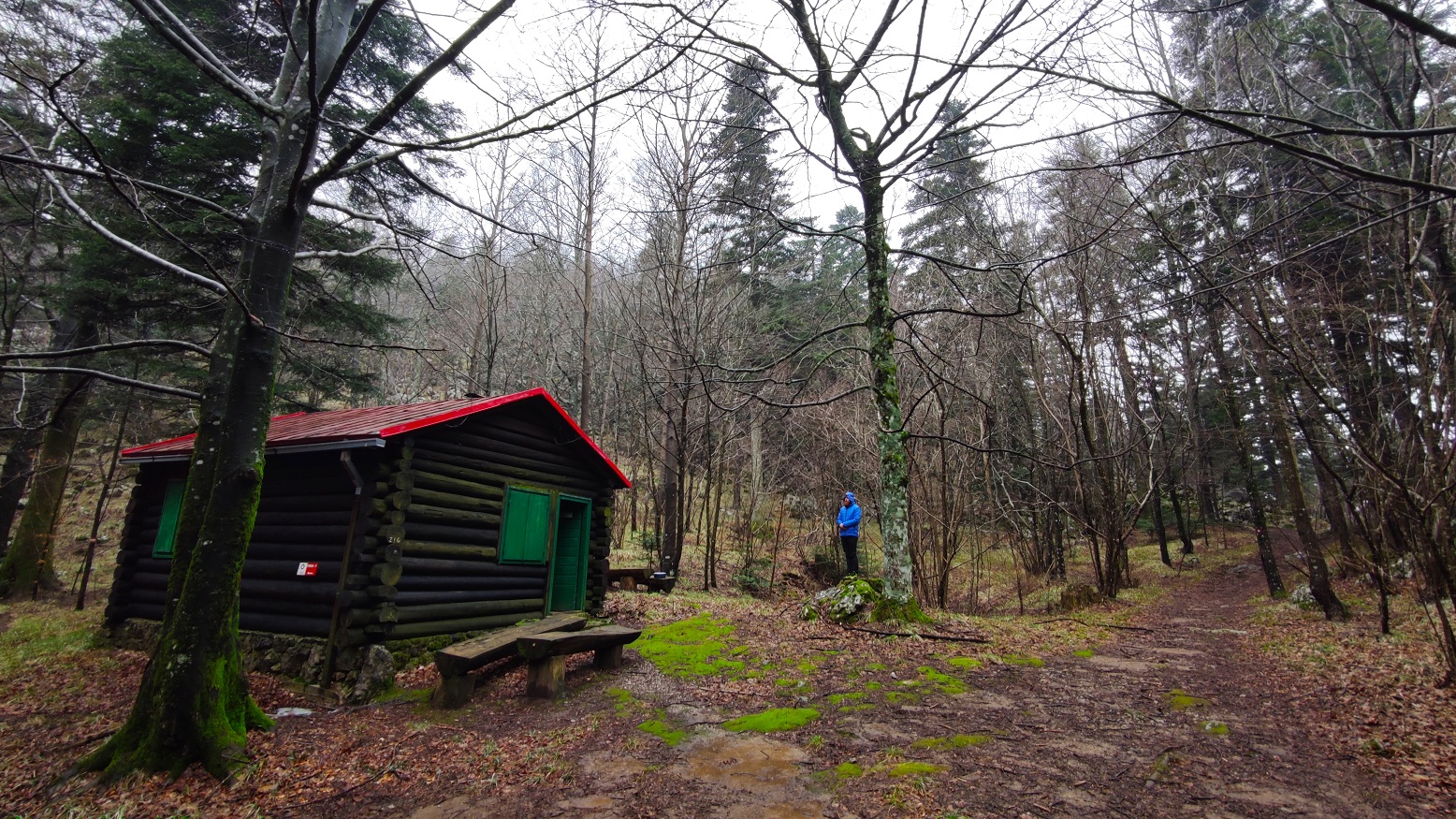
Real Himalayan conditions on Dinara
All the wood was wet, and Matthias struggled to light the stove. Due to the rain falling for the previous three days and over which the snow was falling, their boots were completely wet. Wood splitting and lighting a fire caused them many problems on the way, which, they admit, took a lot of energy and nerves.
"This whole heating situation was forcing us day after day to pick up bags and warm-up, so we went to bed around 7 pm every day," says Josipa.

Mountain lodging Rupe on Dinara
On Dinara, they felt the power of the bura wind for the first time, which even extinguished the fire during one night in the shelter. All the smoke entered the small house, and all attempts to ignite the stove failed.
"It was freezing, minus 10 degrees Celsius, and the feeling reached minus 20 degrees with 110 km/h of gusts of wind. We experienced real Himalayan conditions on the Dinara," says Josipa.
Fortunately, they had warm sleeping bags with them – that were even too hot! Josipa and Matija couldn't believe that they were lying in a room while it's minus degrees while being hot in feathered bags. That's what it means for a mountaineer to have the right equipment. Still, they took advantage of those windy days to take photos and enjoy.
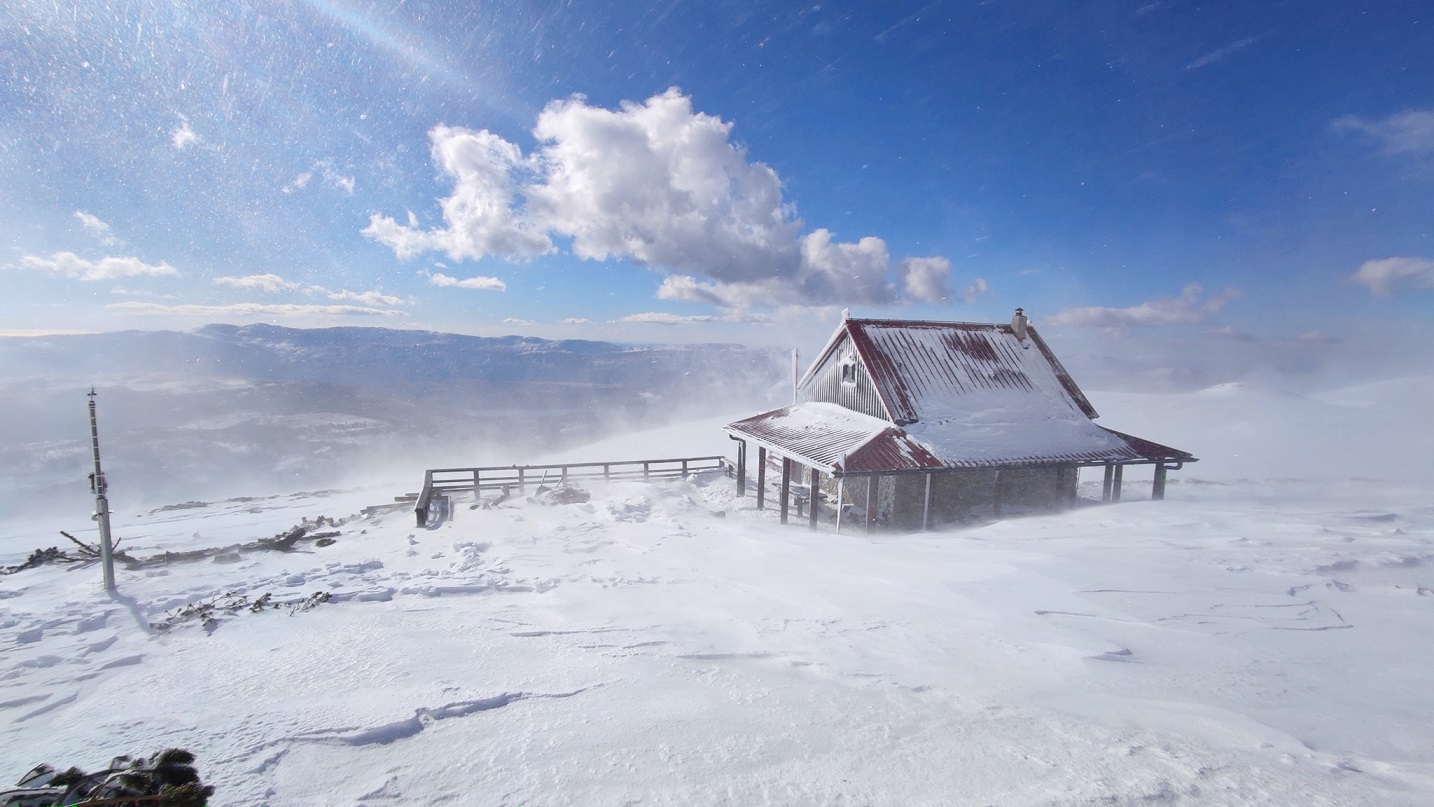
Mountain lodging Pume on Dinara
In the end, they had to leave the shelter and, despite a strong bura wind on which was difficult even to stand, let alone walk, they moved on. As the sun always comes after a storm, the weather finally calmed down, and it was beautiful.
Dinara – idyllic, fascinating, special, spacious, beautiful
The path towards Lišanjski Peak, the highest peak of the southern Dinara, they say, is a magical place that cannot be described but must be experienced. It is also the furthest point from civilization on the entire route.
"You are in the middle of nowhere. There is nothing in sight, no city, no roads, and everything around you is white. Everything is full of white peaks and hills. Idyllic. If someone threw me here and asked where I was, I would certainly not say that I was in Croatia," says Josipa.
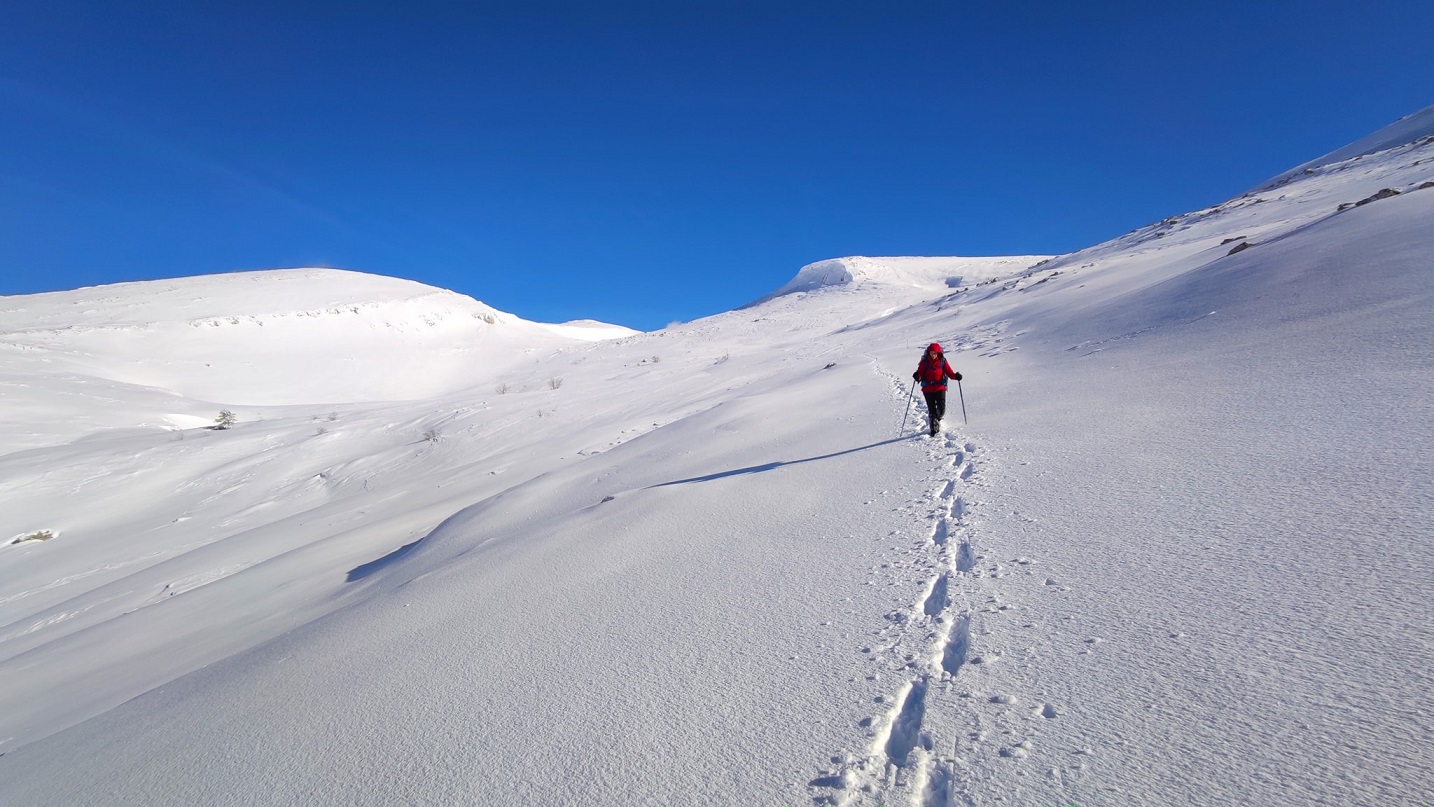
Josipa on Dinara
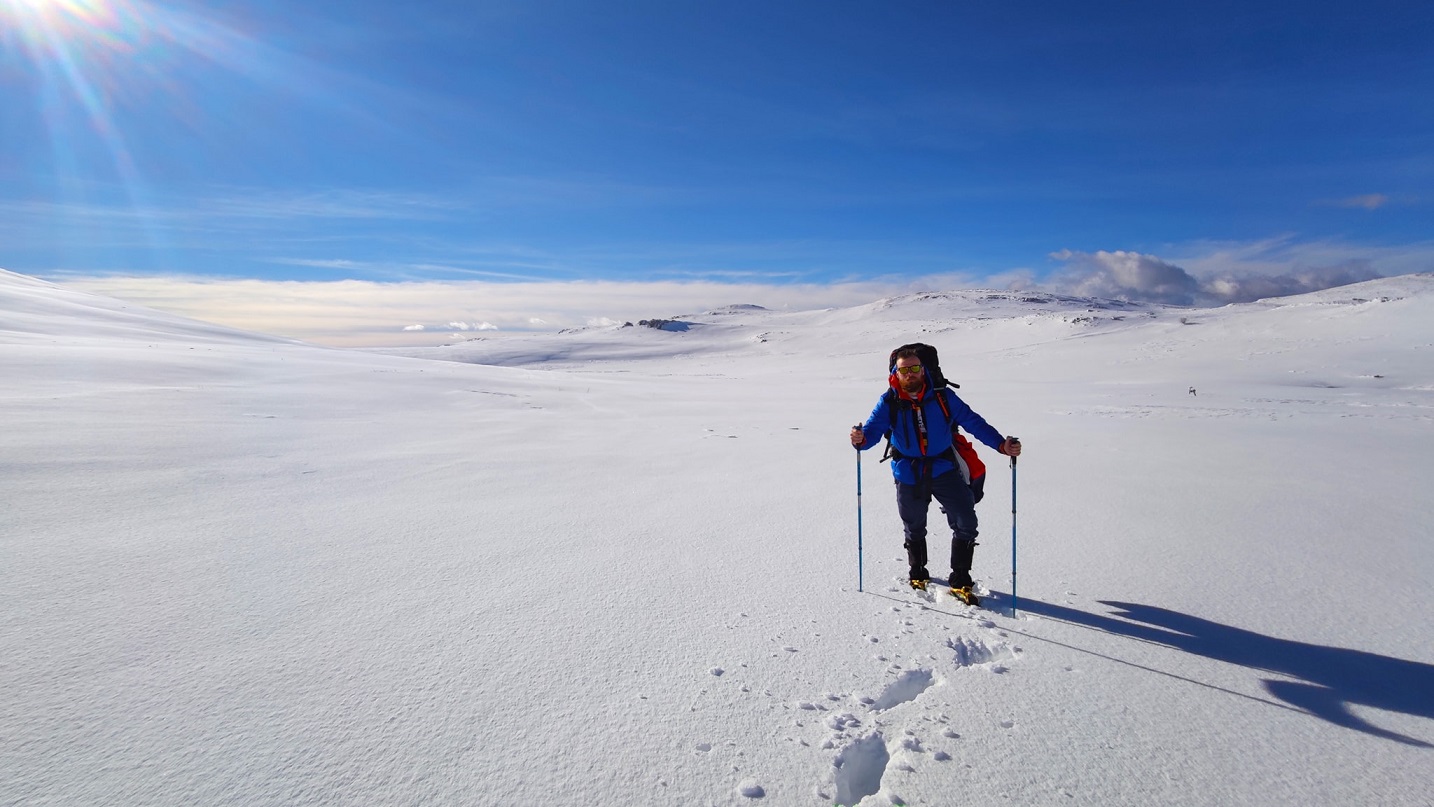
Matija on Dinara
And Lišanjski Peak itself is fascinating – you can see Bosnia, Dinara, the Cetina River source. In those hours and 15 minutes of climbing, they saw many fresh traces of bears, but (fortunately) no bear jumped out in front of them.
That part of the trip was the most beautiful, they agree. The weather was good. They even walked in short sleeves, though the snow had not yet completely melted. This incredible experience will remain in their memory forever. And when they descended to the source of the Cetina, Lišanjski Peak seemed so far away. An exceptional experience, unique energy, and a special ambiance, they say.
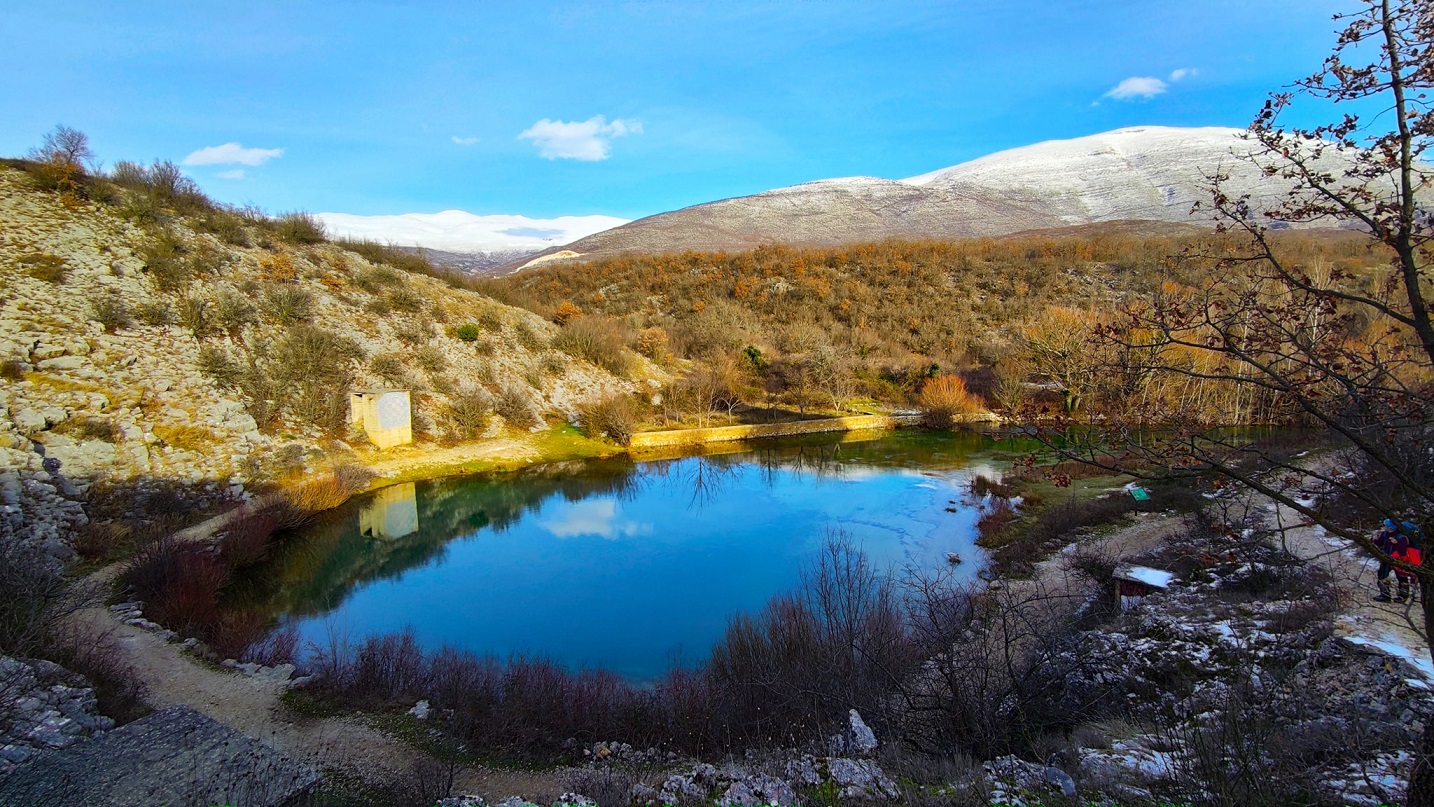
The source of Cetina River
For Sinjal, the highest peak of Dinara and Croatia, they have no words. Now that they saw it under the snow, it seemed ten times more magical than in September when they first experienced it.
"We were standing up at the top, watching, and we couldn't believe where we had come. On one side, you see Biokovo that we passed. On the other side, you see Velebit that's waiting for us. We were proud of each other and ourselves. I get little chills when I think of that part," admits Josipa.

Dinara
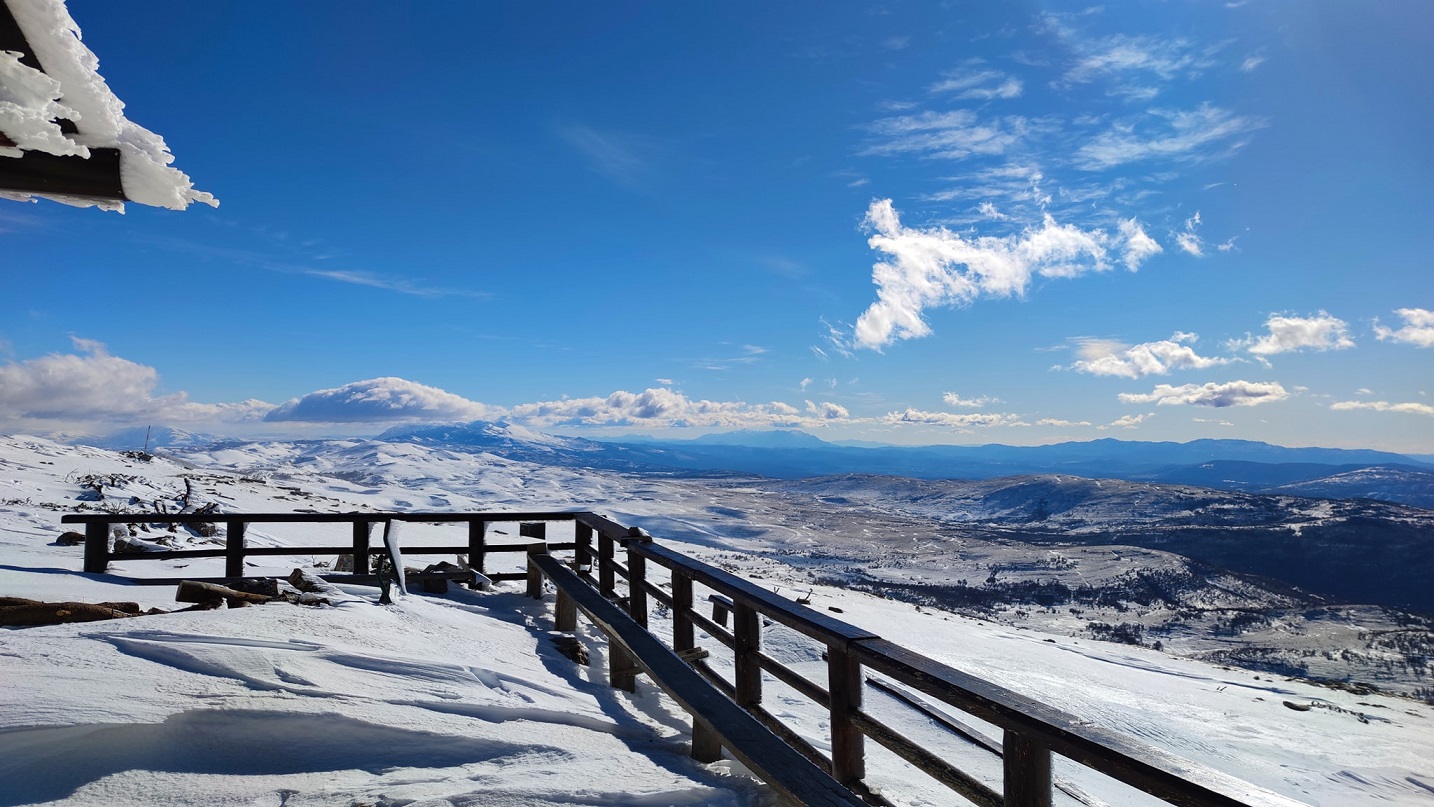
Dinara
"Dinara is so spacious, so beautiful. Of all the mountains on this road, the Dinara has remained most etched in my heart and memory," says Josipa.
Velebit – almost giving up
They walked an average of 25 to 30 kilometers a day to the Dinara, and since they came to Velebit, they had been moving like snails. The weather conditions did not allow them to move faster than 10 kilometers a day.
On Velebit, they again got in a minefield, more precisely a demined area, also due to fog. The fear from Dinara returned. Everything around them was white – down because of the snow, up because of the mist, or clouds in which they were. They were disoriented. Then they realized that it was too dangerous to continue the journey.
Apart from the weather – alternating rain, south wind, bura, minus – their problem was every arrival at the next shelter. There were tears in those moments, they admit.
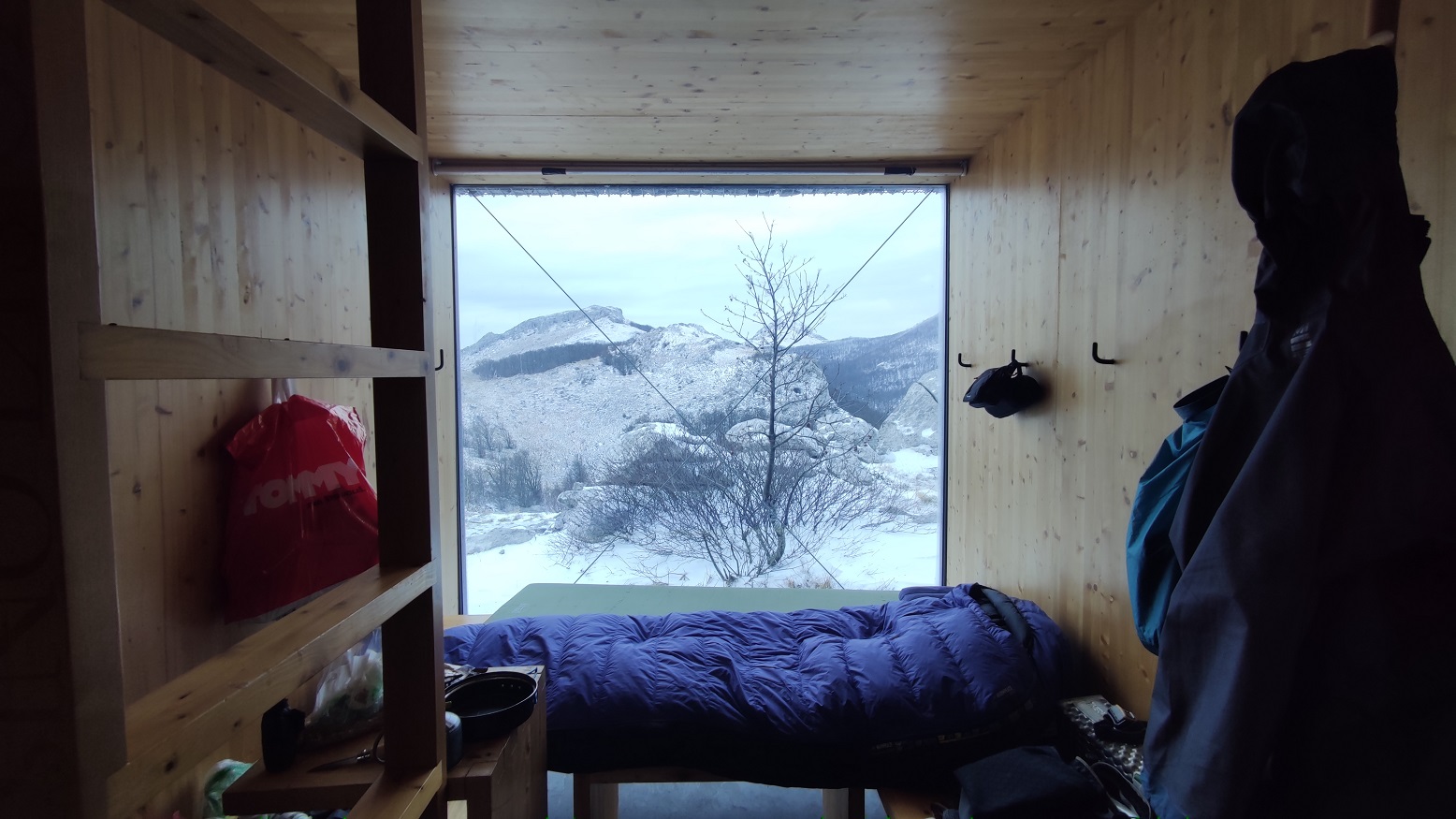
Šugarska Duliba on Velebit
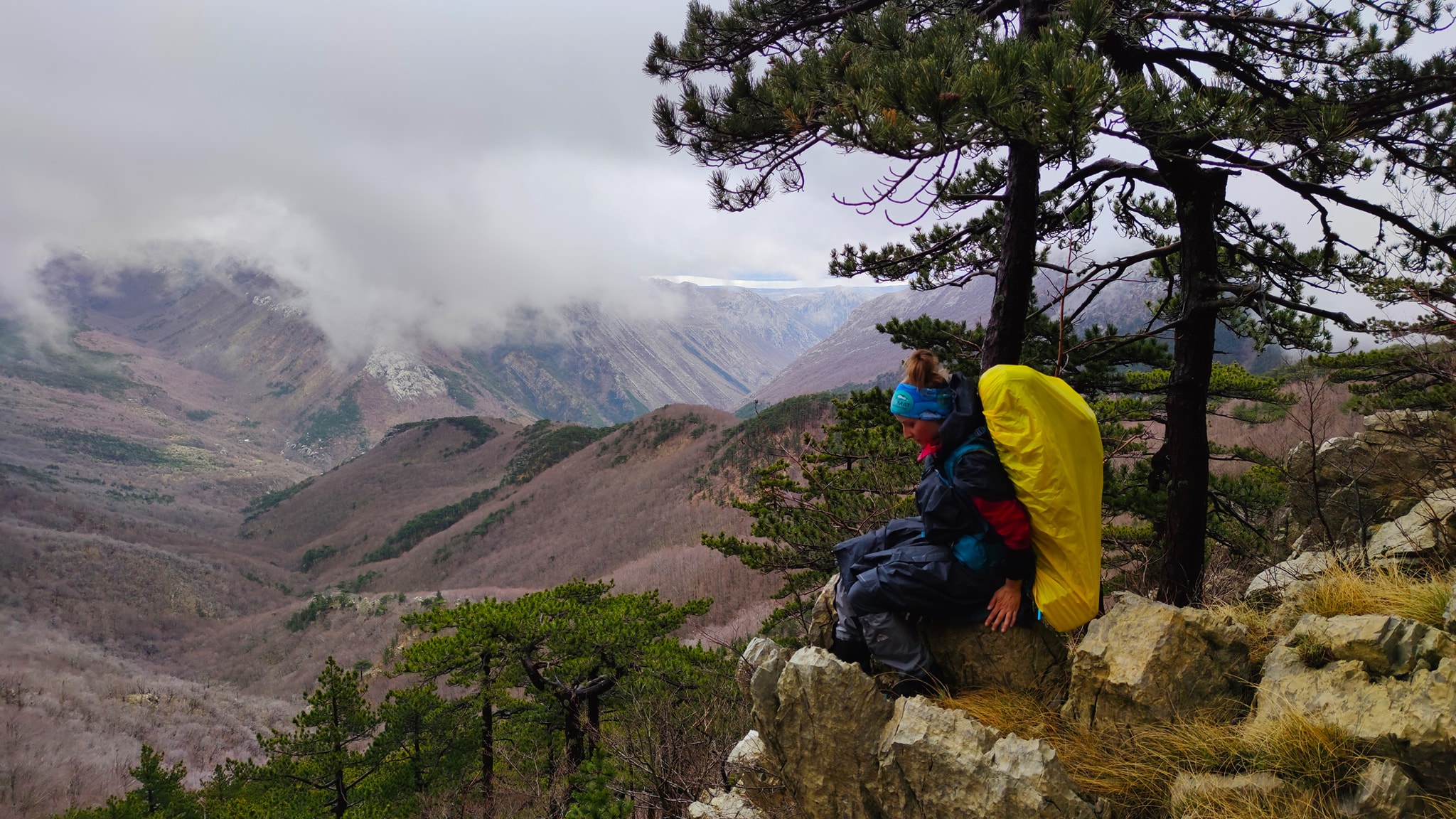
There were some challenging days along the via Via Adriatica trail for this Croatian couple
They could not continue in the rain, especially in the thunder, because it is common knowledge that many mountaineers die due to thunder. However, luck was on their side. One friend drew their attention to a shelter that was not marked on the map, making their journey and planning easier.
On Velebit, they experienced a storm of all storms, with bura gusts of 150 km/h. In places where it pounded them, they barely adhered to sticks, arms, and legs. In one part, the bura even lifted them off the ground.
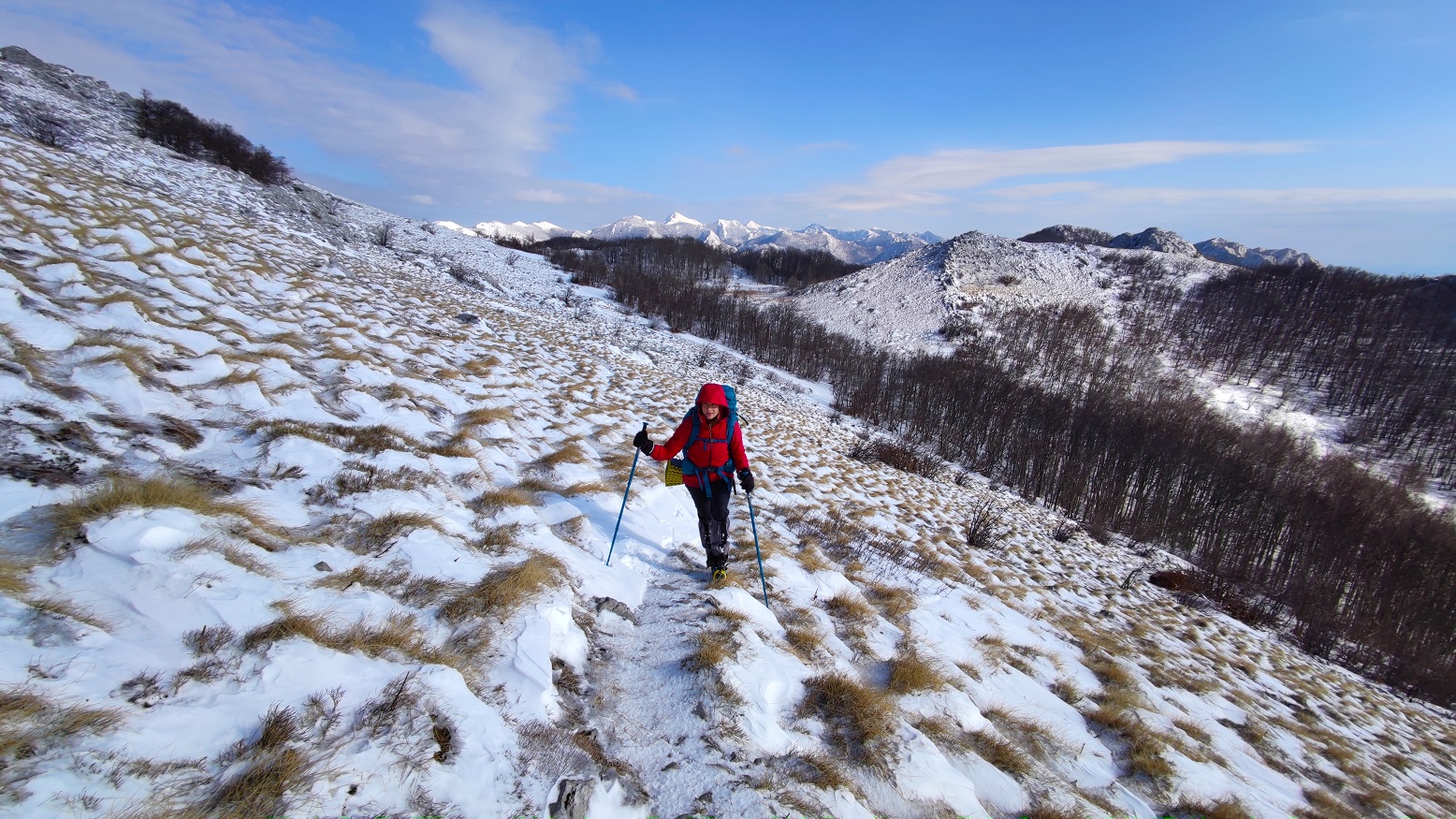
Josipa on Velebit
"Right in front of Baške Oštarije, where a warm bed and meal was waiting for us, the bura was blowing so much that it lifted us off the ground. If we were a pound lighter, we would probably fly into the air," says Josipa, adding that bura and cold take the most energy.
On the famous Premužić trail, cut into the slope, they thought it would be easy. However, when the snow fell, everything froze, and the track did not exist. It cost them time, energy, and nerves. It was a mental and physical breakdown, a difficult period.
"When the weather is great, the terrain is a disaster, and when the terrain is great, the weather is a disaster. Eternal struggle on our path. We were both sad and disappointed after Velebit because of that. Biokovo and Dinara got along so well, then we came to Velebit, and we thought it would be great because it's familiar to us," says Josipa.
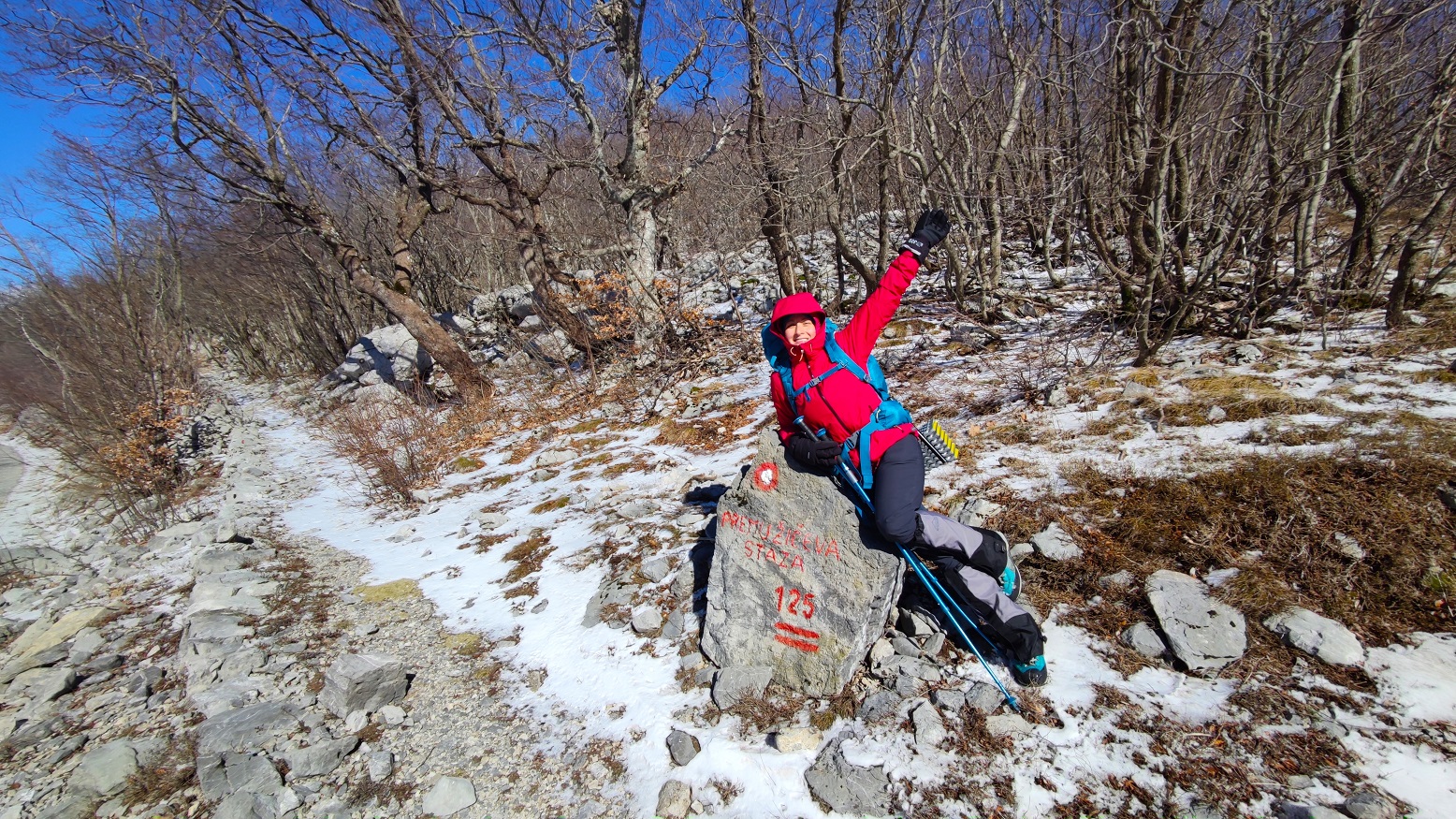
Josipa on Premužić trail on Velebit
Generous help from friends, family, and even strangers
Just before the end of the Via Adriatica trail, in Gorski Kotar, they could barely make their way through the fog, which is why they could not even enjoy the beautiful views. By then, they were slowly fed up, on the verge of giving up, but then, as always in life, friends jumped in. Unselfish support from friends, colleagues, but also strangers came from all sides and gave them extra wind in their backs so that they would not give up when there are already so many successfully traversed sections behind them.

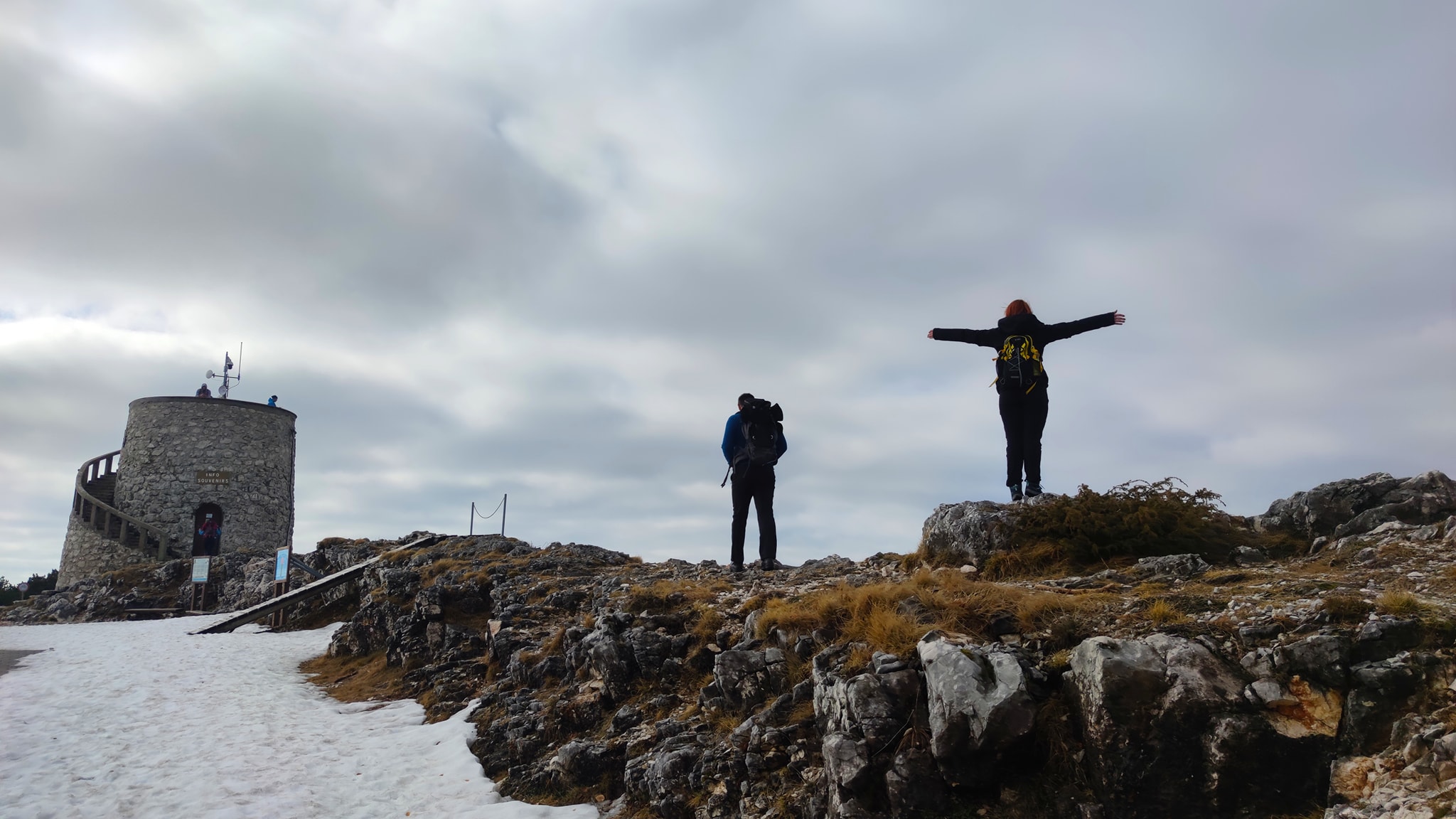
Josipa and Matija on Vojak – the highest peak of Učka mountain in Istria, at the very end of their journey
At Cape Kamenjak, their final destination, they were greeted by family but also by a few unknown people who were supporting them online. Friends couldn't welcome them because of work, but they're preparing a party on Saturday to frame and mark this whole story.
Although they hoped to finish the trail in mid-February, the weather proved to them to be patient and that sometimes things had to go according to nature's plan, not human's. They became patient with each other as well.
"When you spend so much time together, 0-24, you have to make some compromises. As a couple, we function very well, and we support each other when it is hardest," says Josipa.

Josipa and Matija on the Sinjal Peak – highest peak of Dinara and whole of Croatia
Except for roe deers and a few lynxes, they didn't see any wild animals along the way, only a multitude of wolves' and bears' traces, small and large. Also, they were mostly alone along the way, occasionally accompanied by a group of other mountaineers, as well as some beautiful and lovely dogs. However, as they say, they would not survive this trip without the generous help of their friends from Mountaineering Association Vrlovka, who would come and wait for them along the path to give them food and equipment. The fearless team of that mountaineering association even walked with them on Velebit's part while a strong bura wind was blowing, providing Josipa and Matija immense support.
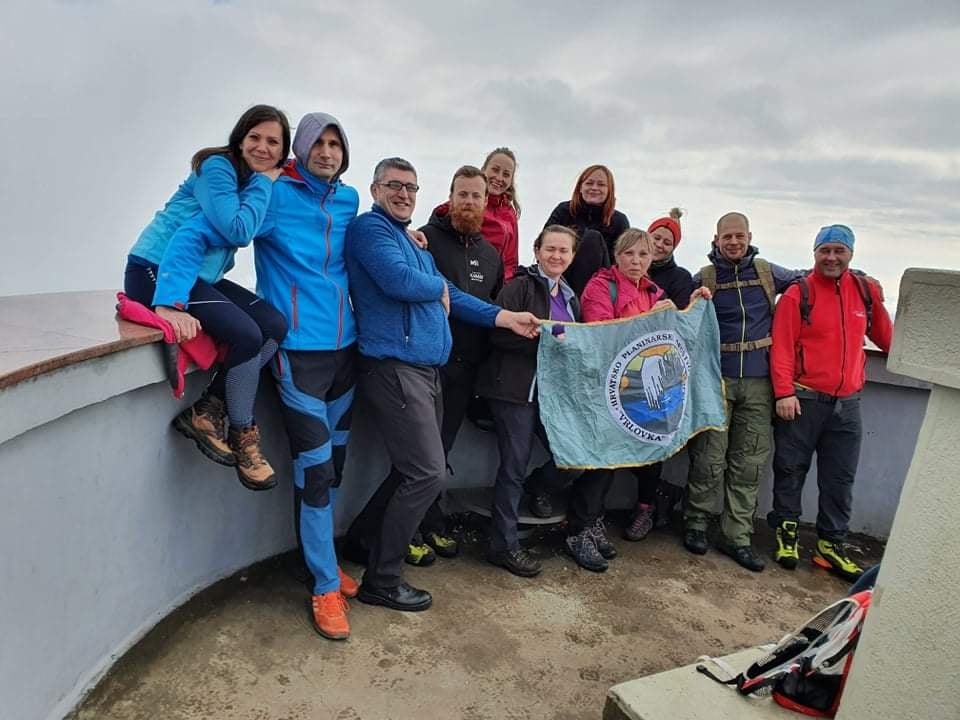
'We wanted to promote the beauty of Croatia, Via Adriatica trail, and active lifestyle'
When asked whether they would dare to retake this path, they agree they wouldn't after all the troubles they faced along the way. But, if asked that question in a week or two, they would definitely say yes, but only under better weather conditions.
Winter has its charms, but it is also exhausting. It requires a lot of hiking equipment, and it is much more dangerous to go in winter than at any other time of year. If Josipa and Matija could choose, they would go in the spring or late fall. When in the mountains in Croatia, one should be humble and patient.
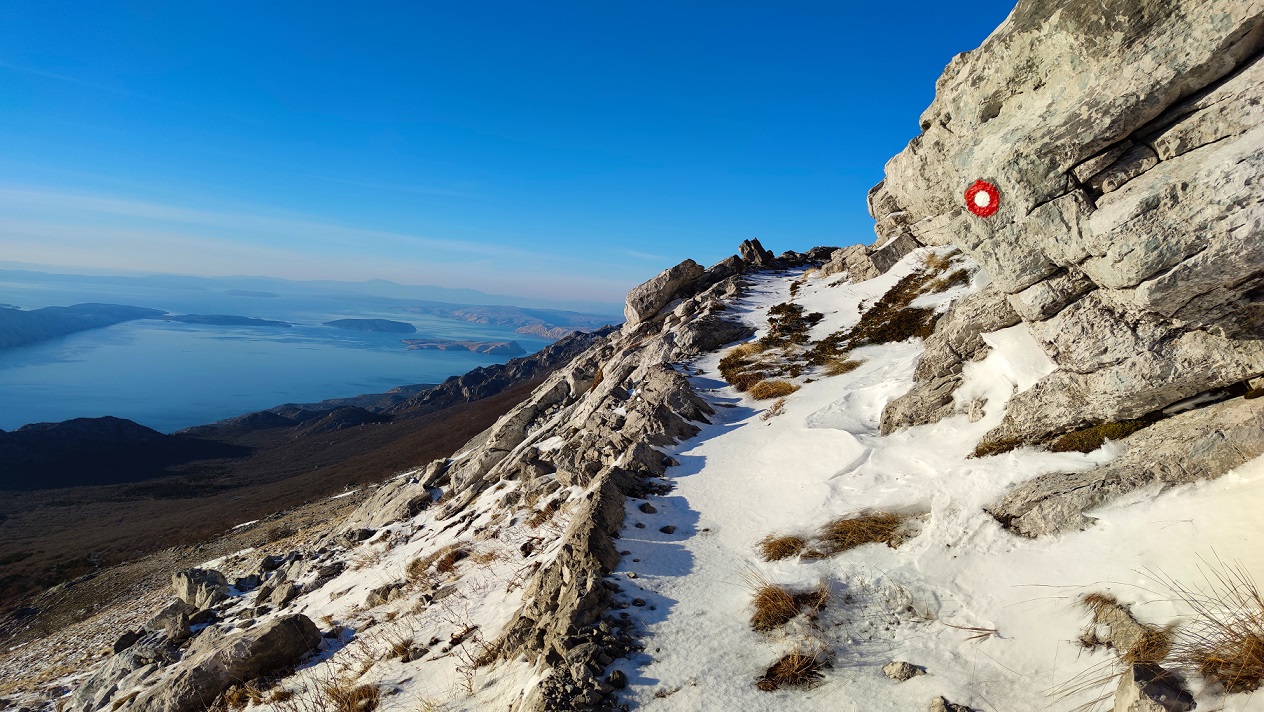
View of Croatian islands from Velebit
"Our goal was to promote the beauty of Croatia, to promote Via Adriatica, and to promote an active lifestyle, especially now at this time of the corona when we are all locked in our homes. I think that hiking is a wonderful hobby, both for the body and for the mind, whether in a company, in a couple, or alone," says Josipa.
Although Josipa and Matija are experienced mountaineers (Matija is even a member of the Croatian Mountain Rescue Service – HGSS), the tour was very demanding for them, both physically and mentally. Considering that they only got a chance to set off on Via Adriatica now, during winter, because Matija's work has been banned and Josipa is having a vacation, the winter conditions did not favor them. But regardless, they enjoyed the inexplicable natural beauties of Croatia and met many generous life-long acquaintances along the way.
"It's hard to describe all those feelings that go through your mind and heart along the way. To understand what we are talking about, it is the best to set out on such a journey on your own," advise Josipa and Matija.

All the photos are from interlocutors' private archives.
You can follow Josipa and Matija and their other hiking journeys on their Facebook page.
For the latest travel info, bookmark our main travel info article, which is updated daily.
Read the Croatian Travel Update in your language - now available in 24 languages.
One Man and His Dog: Outdoors Croatia Explores Velebit with Kids (VIDEO)
November 21, 2020 - While many kids are glued to their phones and other gadgets, the team from Outdoor Croatia offer a more natural way to spend a day - Velebit with kids. Stunning!
It has been a while since I checked out one of my favourite YouTube channels promoting Croatia, and it is great to see it going from strength to strength.
Longer-term followers of TCN might be familiar with the series of articles we did on the man and dog team from Outdoor Croatia, whose efforts are quite simply the best video promotion of The Great Outdoors in Croatia that exists on YouTube. I hope they are being supported and rewarded for their efforts.
I first came across the channel a few years ago when I came across this mesmerising winter run through virgin snow at Plitvice Lakes, a reminder that Croatia's most famous national park and UNESCO World Heritage Site is very much a four-season destination. Since that video, I have toured some of the most beautiful nature spots in Croatia vicariously through the camera of the outdoors Croatia crew - by kayak, hiking, bike and running, all year round.
And in this era of social distancing and avoiding crowds, Croatia's endless natural beauty and stunning open spaces are ever more attractive, providing a very different family experience for those who can leave their gadgets behind and go out to explore.
The latest episode from Outdoors Croatia was uploaded yesterday, entitled Velebit with Kids. Not a soul in sight for much of the day, and you would be hard pressed to find better views than this in the region.
We spent the holiday on Velebit, on Premužić's path south of Alan and back along the path that goes along the ridge over Buljma, altogether a little more than five kilometres.
You can follow the latest from Outdoor Croatia on their YouTube channel.
For more from the TCN One Man and His Dog series, click here.
Three Reasons Why You Should Visit Zavratnica - The Blue Gem of Velebit
February 3, 2020 - Plitvice National Park, Dubrovnik, or islands Brač and Hvar have become sights synonymous with Croatia. Alas, they have also become overused, turned into cliches, and have, sadly, lost their initial appeal and dare I say, even some beauty, because of tourism and greed. But, there is a lot more to Croatia than a few locations tourists mostly visit. Despite its small size, the country of thousand islands has a few more tricks up its sleeves. This one is snuggled way up in the interior, in the shadow of the largest Croatian mountain - Velebit.
Welcome to Zavratnica, an unusual cove, part of Velebit Nature Park and a protected landscape.
Although it is (obviously) not a fjord, it sure resembles one, and part of Zavratnica’s popularity rests on its similarity to these natural phenomena native to Norway.
Just one photo of Zavratnica should be a reason enough to visit. But, there are even more breathtaking things about this place that make it worth visiting. So, without further ado, here are three reasons why you should visit enchanting Zavratnica.
But first…
How to get to Zavratnica?
Walk the promenade
Drive up to Jablanac, a picturesque seaside village, a 2-hour drive away from Zadar. From there, it takes a 20 to 30-minute walk along the Jablanac promenade to get to Zavratnica.
Walk down the hiking trail
The more adventurous ones can drive up to the village Zavratnica in the mountain and walk the marked hiking trail that’ll take you to a viewpoint with an amazing view of Zavratnica.
1. Origin story
There’s a legend about the origin of Zavratnica that tells of an earthquake in the Middle Ages, destroying three cities. However, the real origin story of Zavratnica is less catastrophic but amazing nonetheless (at least for geology buffs). According to the Velebit Nature Park website, it dates from the Cretaceous period and is a result of tectonic movements that submerged the surrounding cliffs, thus creating the fjord-like look.
2. Interesting history
The Austro-Hungarian aristocracy discovered this natural beauty at the beginning of the 20th century and have used it as a location for their summer holidays.
Right at the beginning of the cove, If you take a good look into the crystal clear water, you’ll see the rusty remains of a sunken battleship from the Second World War.
Don’t forget to bring your snorkeling gear - who knows, maybe there’s some treasure hidden inside that ship.
3. Untouched nature
Although every year there are more tourists, Zavratnica is still not endangered by tourism. The sea is clean, clear and splendidly blue - ideal for a refreshing swim. Also, the area is home to 129 plant species, most of which are native to the area.
Bonus tips:
Bring some cash. To get in, you have to pay an entrance fee of 30 kunas (as of last tourist season).
If you’re planning to visit island Rab (it’s just across Zavratnica), include Zavratnica into your itinerary.
To read more about travel in Croatia, follow TCN's dedicated page.
Croatia to Gain New Tourist Destination with 68 Million Kuna Project
As Poslovni Dnevnik writes on the 8th of April, 2019, the Cerovac caves are some of the most interesting geomorphological attractions nature has to offer in Croatia, and the caves were originally set up for visitors back in 1951.
The ''Cerovac caves'' centre of excellence deals with the sustainable management of natural heritage and karst underground, and this new tourist project should be able to get completely off the ground in two to three years, writes Večernji list.
The Cerovac cave project is being carried by the the Velebit Nature Park public institution (JUPP Velebit) and the project's partners, which include the Zagreb Speleological Association, Zadar County and the public institution for the protection of nature of Zadar County, Natura Jadera.
''The total value of the project stands at 68.5 million kuna, out of which approximately 53 million kuna of non-refundable money is being granted by EU funds, and the rest of the money, along with that of the project's partners, will be provided by the Ministry of Environmental Protection and Energy and the Environmental Protection Fund,'' stated the president of the Zagreb Speleological Association and historian Stipe Tutiš, who was immediately followed by architect Roman Šilje, who went on to explain the meaning behind and the ultimate goal of the whole project.
''In southeastern Velebit, in Crnopac just above Gračac, the largest natural speleological sight in the Dinaric karst, the Cerovac caves, can be found. So far, only the ipper and lower Cerovac caves were visible and accessible, but owing to the passage of time and to the Homeland War, they remained neglected. Therefore, Croatian speleologists, as the initiators of this project, have begun with all of their other partners to return to this unique karst phenomenon and give it the importance it deserves, so, back in 2010, we started with the development of this project. Five years later, the project documentation got started, which was funded by the Environmental Protection and Energy Efficiency Fund.
In October 2016, the project was submitted to the Operational Program for Competitiveness and Cohesion 2014-2020. The evaluation lasted from October 2016 to April last year, and on April the 4th, 2018, around one year ago, an agreement was signed with the Ministry of Regional Development and EU Funds,'' concluded Šilje.
Make sure to follow our dedicated lifestyle page for more information on current projects in Croatia and much more.
Kvarner the Injured Griffon Vulture Found and Treated in Germany
As Morski writes on the 5th of January, 2019, back in October, German rescue workers in Kaditz near Dresden came across an unwell nine-month-old griffon vulture from Kvarner in Radebeul vineyard.
The injured and sickly bird was simply lying exhausted on the ground. Although his wingspan stood at a massive 2.8 feet wide, the unwell bird was exhausted and his weight was a mere kilograms. On his leg he wore a ring labelled "Kvarner", from which his German saviours determined that his country of birth was Croatia, according to a report by Fenix Magazine.
The rescuers collected the unlucky young bird and took him to receive immediate medical attention, in a location at which numerous other sick and wounded bird species are treated.
Over time, the young and rather unfortunate griffon vulture from Kvarner slowly recovered, and his German rescuers named him ''Kvarner'', owing to the ring on his leg. With the proper care and time to heal, Kvarner got better day by day, accumulating extra strength for his return to his native Croatia.
''Now he weighs twice as much than when we first found him. At first he was only eating crumbs, and thanks to the hunters who supported us, he eventually took to eating meat from wild game, and wild boar meat. Now he's even become a little gourmand because instead of eating entrails, he now loves to eat hearts and livers from game animals,'' stated Saskia Keller of the German facility currently treating young Kvarner, who is growing stronger with each passing day.
This young bird of prey from Cres, which is the closest relative of the eagle, will remain in Kaditz until March. He will then be released back to his native Croatia, more specifically in Kvarner bay.
Since a few colonies of such birds can be found on the island of Pag and in the Velebit mountain range, it is estimated that in the Republic of Croatia there are between 110 and 140 pairs of these predatory birds in total.
Make sure to stay up to date with our dedicated lifestyle page for more.


